Manna moment:For our recognition of God's great creation we learned verse 5 of Psalm 95 to add to our first four verses that we have been learning. Psalm 95:1-5 "Oh, come, let us sing to the Lord, let us make a joyful noise to the rock of our salvation. Let us come into His presence with thanksgiving; let us make a joyful noise to Him with songs of praise. For the LORD is a great God and a great King above all gods. In His hand are the depths of the earth, the heights of the mountains are His also. The sea is His, for He made it, and His hands formed the dry land." We are learning these with some hand motions to help us remember. Opening Activity: Review VocabularyWith all the students sitting in a circle, I gave a few students a fly swatter. I would read the definition of a vocabulary word and the students with a fly swatter would swat the correct vocabulary word. After they swatted the card, they were to pass the fly swatter to the next person on their right. Read Aloud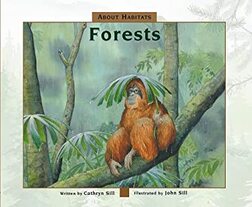 This book touches on all the different kinds of forests, their flora and fauna. It also teaches the differences between the different forests in reference to climate and rainfall. These are great books for elementary students. They have very short, one sentence text for younger learners along with more details of each picture in the back for older learners. Where are the Boreal Forests? Using their map in their guidebook, they could color where the Boreal Forests are located. Pine Cone/magnolia cone experiment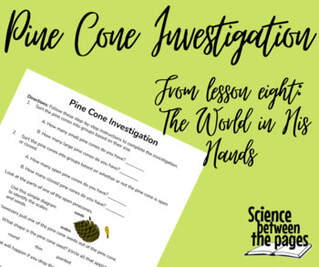 1. We sorted pine cone and magnolia cones into small and large. 2. Then we sorted them based on whether the cone was open or closed 3. We looked at the different parts of a cone (the seeds and scales 4. With our tweezers, we attempted to find any seeds left in the cones. 5. We submerged them in the water to see how they would react. Giving the pine cones a little bath to see how they react. About an hour and a half later, the pine cones that were in the tub of water, were completely closed up. 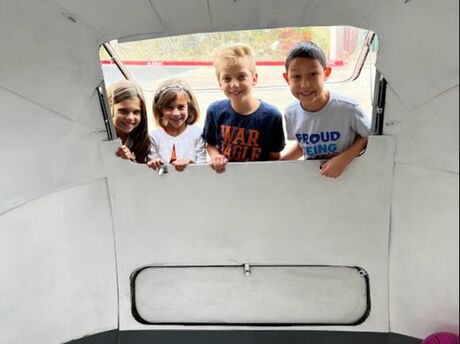 Always ready to begin their science class in the Route 104 Science Airstream. Sorting cones in our Route 104 Science Airstream Counting the cones Layers of the forestThe three main layers of the forest are the forest floor, the understory and the canopy. The emergent layer is found only in the rainforests and there are the herb and shrub layer as well within a forest where different plants and animals live. Within the biomes of forests, there are different ecosystems in the layers of the forest. I gave each of my students a paintstick (free at Home Depot) to color like a tree and then used clothespins to mark the different animals that lived in the different layers of the forest. All the instructions for this are on the TPT printable below. Layers of the Forest HopscotchAs they finished these activities, they could come to the door and 'hop' right on out naming the different layers of the forest on their way out. Typically, I have just taped boxes to the floor to do this, however, I recently invested in an Agility Ladder which saves me some class prep time and the students can still jump to the different layers. Student workLast week, I introduced making a Biome sheet to review the different parts that make up the Grasslands Biome. There is cutting, coloring and gluing involved and it doesn't all get done during class. It is such a joy to me to share the student's work. I love seeing them learn, what an honor and joy!
0 Comments
manna momentMatthew 6:30- "But if God so clothes the grass of the field, which today is alive and tomorrow is thrown into the oven, will He not much more clothes you, O you of little faith?" I love how God has designed grass. Grass grows from the base of their leaves which allows the grass to continue to grow even after grazing animals have eaten all the tips. Grass feeds many different animals and it was very intentional that the different animals that eat grass eat different parts of the grass. Some animals eat the grass seeds, others eat the grass one leaf at a time like the grasshopper, while others eat the tips. It is interesting that the scripture depicts something that is a very common occurrence, grass fires. If the Lord provides for the grass in the fire by not allowing the fires to destroy them, He redeems and it is purposeful in allowing it to burn away the old parts of the grass so that new grass can grow. This is part of God's Redemptive Story in that where there is death, there is life. Jesus dying on the cross for our sins gave us new life in Christ, from death comes life. different kinds of grasslands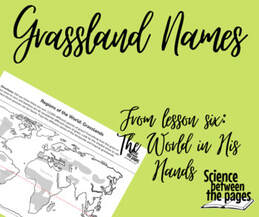 In the student's guidebook on page 34, there is a map of the world with the grasslands grayed out for the students to color. On this particular map, the names of the different grasslands are also written on it for the students. So we will review the different continents as we learn about the different names of the grasslands around the world. Read aloud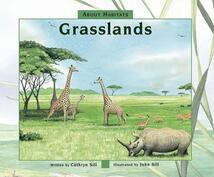 The Grasslands by Cathryn Sill is a beautiful book that gives credit to the Creator for His creation! This is placed in the acknowledgements. The illustrations are wonderful along with the simple text that informs the reader of the different types of flora and fauna found in the grasslands. At the end of the book, there is an appendix that shares more in depth information about each topic. To go along with this book, we made a listening guide for the students to follow along with. Grasslands biome sheet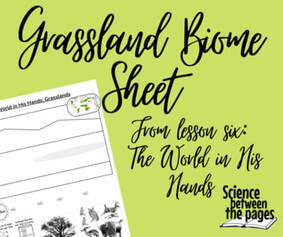 For every biome, there will be a sheet where the students can pick some flora and fauna to glue onto their biome sheet along with a food chain, a thermometer and a rain gauge. This offers a great review to what we have learned about grasslands. This is an example of what the Biome sheets could look like. These are ideally to remain in their student guidebooks so that everything stays together. I went ahead and placed the thermometer and rain gauge on the back to keep the page even but the students do not have to do it this way.
Manna MomentGenesis 1:24-"And God said, "Let the earth bring forth living creatures according to their kinds-livestock and creeping things and beasts of the earth according to their kinds." And it was so." What day of creation do you think that the Lord God made the grasshoppers? It was on the sixth day of creation. he made all the creeping things on this day along with the animals and humans. Some species of grasshoppers change into locusts. The Lord used a plague or swarm of locusts in Egypt to destroy the rest of the crops that weren't destroyed from the previous plague of hail. Do you think that the grasshoppers and locust before Adam and Eve sinned would swarm and eat up entire crops? Or do you think that this phenomena is a result of the sin that entered the world when Adam and Eve disobeyed? Reviewing the Regions of the WorldI placed my large map on the floor and had the students 'swarm' like locusts across the world to the different continents and oceans. Read Aloud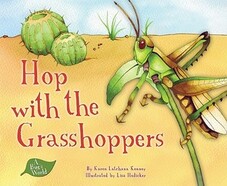 Hop with the Grasshoppers by Karen Latchana Kenney is a perfect book to read aloud. The pictures are very clear and the author is sure to point out all the wonderful aspects of grasshoppers from how they breathe, how they smell, how they stay safe, and how they reproduce. The text is not too lengthy but packed with information. grasshopper observation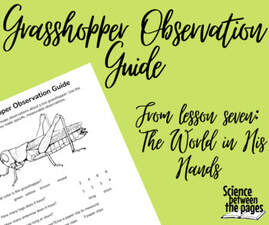 For my students to practice their observational skills, I brought in some grasshoppers in a terrarium. We did some preliminary observations orally. I asked, "Is the grasshopper hard or easy to see? What color is the grasshopper? What is the grasshopper doing? What parts of the grass hopper can you identify? Do you notice anything interesting? Using our observation sheet for grasshoppers, we were able to document what color the grasshoppers were, how many legs it has, what kind of antennae they have and see if we could tell if it was male or female.  How many grasshoppers can you see in this picture? Their camouflage is amazing!! 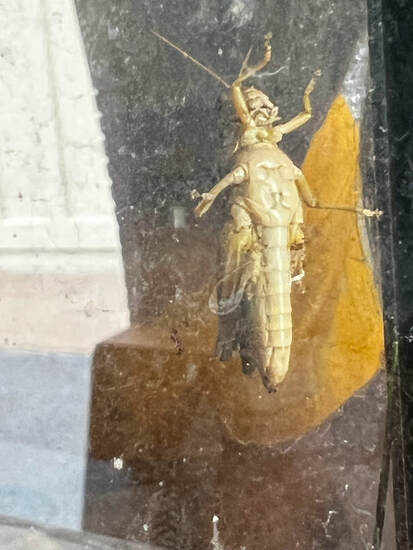 This is a great picture of the head, thorax, and abdomen of the grasshopper. This is also a good picture that shows if it is a male or female grasshopper. Can you tell if it is a male or female? A female's abdomen will be longer, more pointed with an ovipositor at the end (four pointed tip). A male's abdomen is rounder and shorter than a females. So in this picture, this grasshopper is a female. Can you see the ovipositor? compound eye observation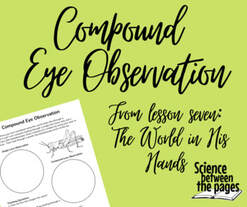 We had learned from the read aloud book that grasshoppers have compound eyes to be able to identify predators that might be coming to eat them from behind or the side. Humans have one lens and takes in an image all at once. A grasshopper compound eye has thousands of lenses and they take in pieces of an image per lens. This allows them to detect fast moving predators quickly. Have you ever wondered what the world looks like through a grasshopper's eye? I gave each student a plastic kaleidoscope for them to look through and observe a toy. They were to make their observations and draw them on their Compound Eye Observation sheet.
grasshopper popper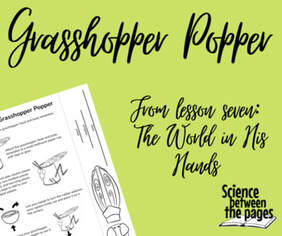 Next, we made a model of a grasshopper using these little rubber poppers as the base. Here is the template to make all the pieces for the grasshopper popper. You would need the 3oz. bathroom cups to create your grasshopper on. step by step instructions for the grasshopper popperOne of my classes didn't get to make these in class, so I gave them a baggie with the materials to make at home. Here are the step by step instructions on how to make these: 1. Cut out the strip from the Grasshopper Popper page in your student guidebook. 2. Color the grasshopper any color they want. 3. Cut the chenille stems to the appropriate lengths: 4 short, 2 medium, and 2 long using the other half of the cut strip as a template. (Already cut if you received a baggie from me during class) 4. Cut out the grasshopper head and poke little holes where the antennae will be. 5. Poke 8 wholes in a plastic 3 oz bathroom cup; 2 for the antennae, 6 for the legs. 6. Place the 2 medium chenille stems where the antennae would go and thread the grasshopper head onto the chenille stems. Secure the grasshopper head with a piece of tape on the back. 7. Place the 4 short chenille stems in the front for the four front legs of the grasshopper and then use the long chenille stems to make the jumping legs. Bonus: Grasshopper anatomyManna MomentPsalm 95:1-4- "Oh come, let us sing to the LORD, let us make a joyful noise to the rock of our salvation. Let us come into His presence with thanksgiving; let us make a joyful noise to Him with songs of praise. For the LORD is a great God and a great King above all gods. In His hand are the depths of the earth, the heights of the mountains are His also." Before we begin studying the wonderful Biomes in our magnificent world, we must first learn the regions of the world where they are located. There is such peace that I have knowing that I don't have to know everything about each biome to know that God is taking care of all things in our world. Praying that as we discover God's awesome creation, we might draw closer to Him knowing that He has you and me in His loving hands. What Role do I play ReviewAs the students came into class, I had them sort through the vocabulary about food chains and food webs last week and coupled it with which animals are herbivores, carnivores, omnivores, scavengers, decomposers. Read Aloud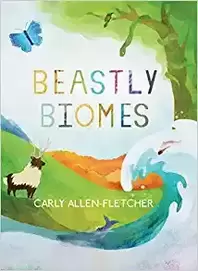 Beastly Biomes by Carly Allen-Fletcher gives a wonderful overview of the Biomes of the Earth that we will be covering for the rest of the school year. The illustrations are vibrant and appealing while giving short texts about the different biomes and the animals that live there. While I was reading, I had the students pick out the animals that they liked the best to read about. He's Got the WHole World In His HandsUsing my oversized map of the continents, we learned the continents and oceans by singing the song, He's Got the Whole World in His Hands. You would sing the first stanza like normal and then the second stanza you substitute words for continents and/or oceans. "He's got North and South America in His hands He's got Europe, Asia, Africa in His hands He's got Australia and Antarctica in His hands He's got the whole world in His hands" "He's got the Arctic and Atlantic in His Hands He's got the Pacific and Indian Oceans in His Hands He's got the Southern Ocean too, in His hands He's got the whole world in His hands" 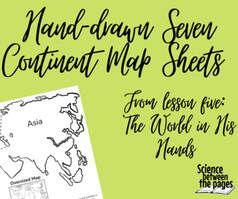 Included in the World in His Hands curriculum is a world map that can be copied on different colored cardstock for different continents. They can laminate these and use them for geography, history and science. Here is an example: Coloring in the Grasslands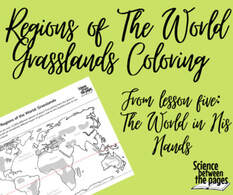 Now that the students are familiar with the Regions of the world, we practiced coloring in all the different grasslands in the world on the different continents. growing a grass HeadOur final activity was decorating a small cup with a silly face. After we decorated the cup with silly faces, we placed some soil and grass seeds in the cup. Hopefully we will have some amazing grass heads whose hair we will need to clip. Science Nesting Circles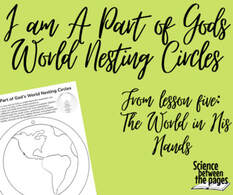 An activity for the students to do at home is to make these Science Nesting Circles to review vocabulary and also make personal connections to what we are learning. The first and smallest circle says "I am a Biotic part of my..." And then the next circle says 'habitat' which would be a picture of your home. Next is the 'ecosystem' which would be a picture of your city. Next is 'biome' which would be a picture of your state. Next is 'biosphere' which would be your continent. And finally, world- a picture already drawn of the world. manna momentPsalm 95:1-3- "Oh come, let us sing to the LORD, let us make a joyful noise to the rock of our salvation. Let us come into His presence with thanksgiving; let us make a joyful noise to him with songs of praise. For the LORD is a great God and a great King above all gods." Do you remember in the first ecosystem how there was no death? When Adam and Eve ate the fruit of the Tree of Knowledge, sin entered the world and the wages of sin is death (Romans 6:23) therefore death entered. We will be learning about food chain and food webs today. This is part of the natural world we live in today. Animals eat plants, animals eat animals and humans eat animals and plants. While this may seem gruesome, we have hope in Jesus Christ. Sin entered the world through one man, and one man, Jesus, brought us salvation from sin and death. It won't always be this way. It is prophesied in Isaiah 65:25 that "The wolf and the lamb shall graze together; the lion shall eat straw like the ox, and dust shall be the serpent's food. They shall not hurt or destroy in all my holy mountain says the LORD." "For the LORD is a great God and a great King above all gods." reviewing the water cycle with salt crystalsFor the student's 'At Home' Adventures, I had them choose to either observe the water cycle in a sandwich bag or make Salt Crystals on a stick. See Lesson 3 blog for details on these activities. Hope and I decided to make salt crystals to observe this past week and today she presented them to the class as we reviewed the water cycle. Here is how we made them. Hope formed some modeling clay pedestals to place her toothpicks in. The students each felt the crystals. They were hard and rough not fluffy and soft like they looked. going out to eat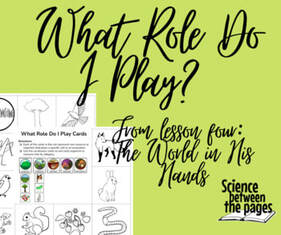 Today, I introduced nine more vocabulary cards called Energy Transfer Cards. Food chain- sequence of transfers of matter and energy in the form of food from organism to organism Food web- all food chains in a single ecosystem. Producers- Organism that makes its own food ie: plants Herbivore- Animal that eats only plants. Carnivore- Animals that eat only meat. Omnivore- Animals that eat plants and animals Consumer- A living thing that must eat other organisms to obtain energy necessary for life. Scavenger- An animal that feeds on dead organisms. Decomposer- Organism that breaks down dead organic material. I introduced these by all using cards from 'What Role Do I Play' cards. These are drawn pictures of different kinds of animals. Once the students understood the meaning of the new vocabulary words, I had them apply that knowledge to identifying which animal was a herbivore, carnivore, etc. read aloud- Pass the Energy by barbara shaw mckinney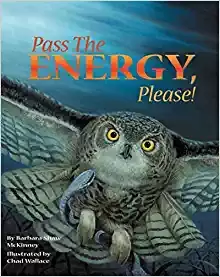 This book uses the imagery of links to guide the students through different food chains in different types of ecosystems. As we read through each different ecosystem, we identified the links that were involved in that food chain. The students also had a listening guide that would help them identify their vocabulary words introduced previously in the class. At the conclusion of the book, I had the students make little foods chains using construction paper. Yellow represented the sun, green represented producers and purple represented consumers. Food chain energy transfer game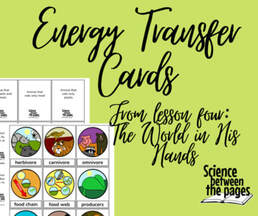 For our final activity with our new vocabulary words, we played this Energy Transfer Game. I passed out Producer, Herbivore, Carnivore, Omnivore, Scavenger, and Decomposer cards to the students. These are laminated, hole-punched and have a piece of yarn attached so they can go over a student's head. I represented the Sun and gave out Energy Strips to each Producer. Producers are not allowed to move at all, they are 'planted'. Herbivores and omnivores can move and take the 'Energy' strip from producers. Carnivores can take 'Energy' stripes from other carnivores, omnivores or herbivores but cannot take from producers. If a consumer runs out of 'energy' strips they've collected, they die and a scavenger can take their place. Every step that a consumer takes, they must tear off a square from their energy strip. Scavengers and decomposers receive energy by picking up these torn squares from the floor. They, too, can only move if they are gathering energy. |
LEAD LEARNERWelcome! My name is Nicole Fleming and I have been leading science learning in the Bryan/College Station homeschool community for over 10 years. Archives
November 2022
Categories |
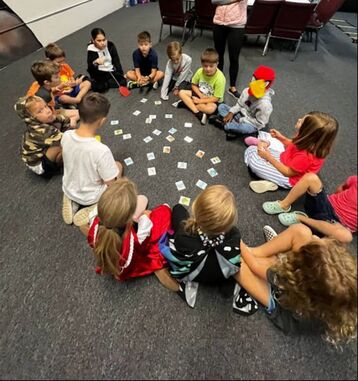
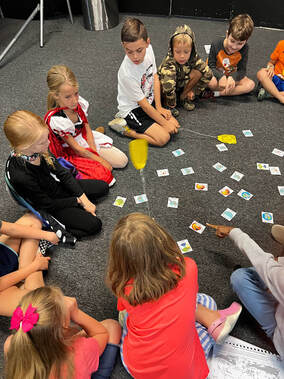
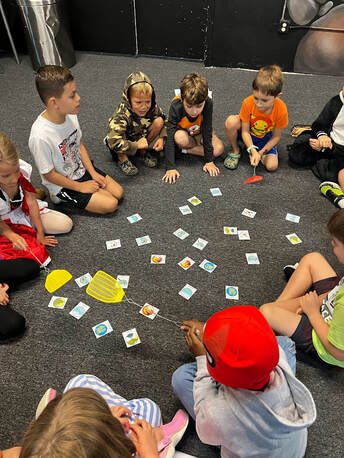
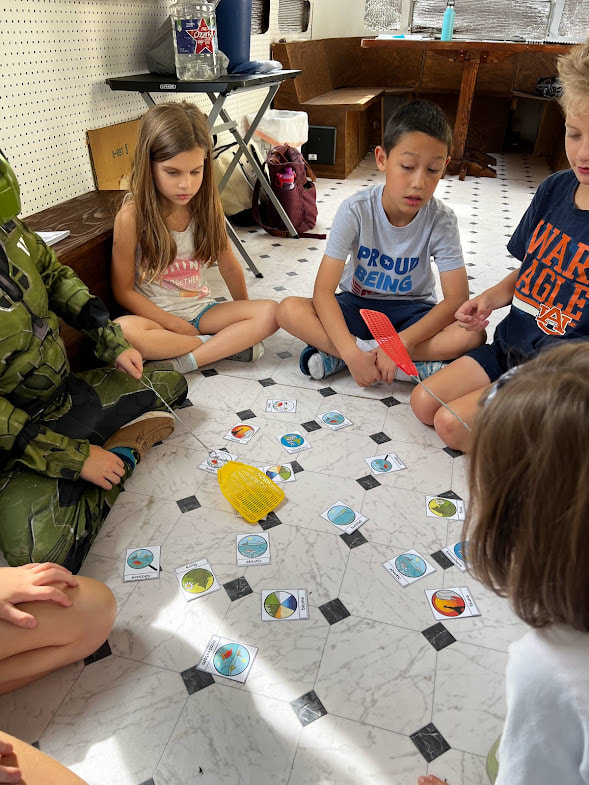
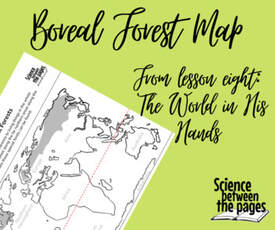
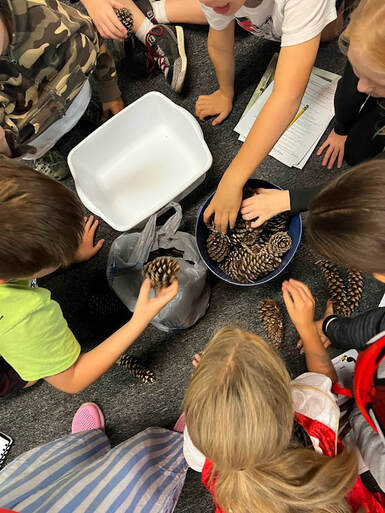
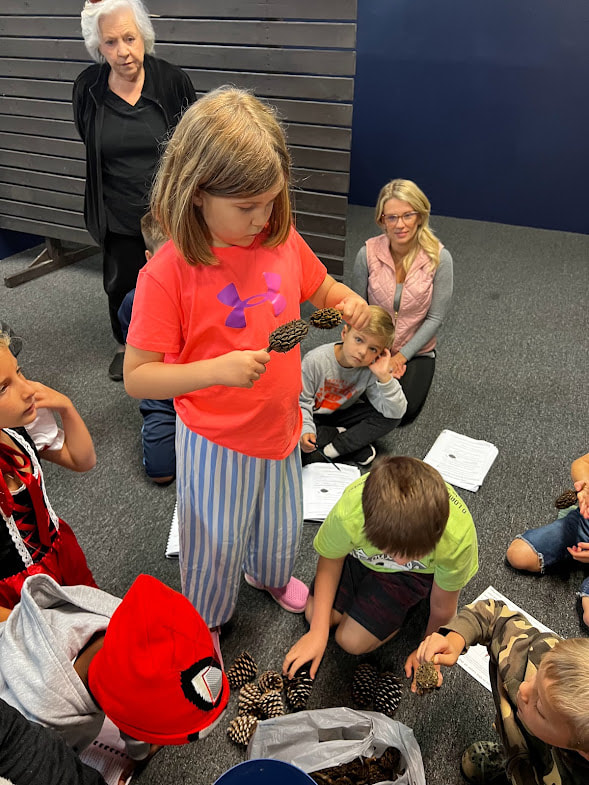
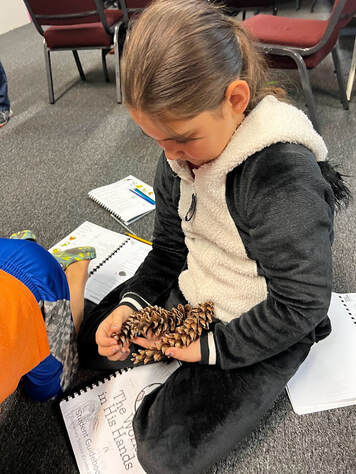
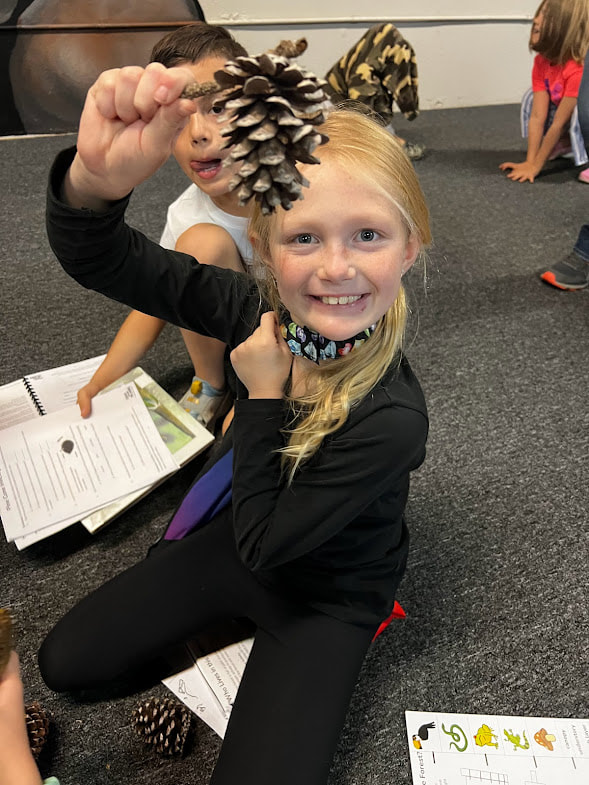
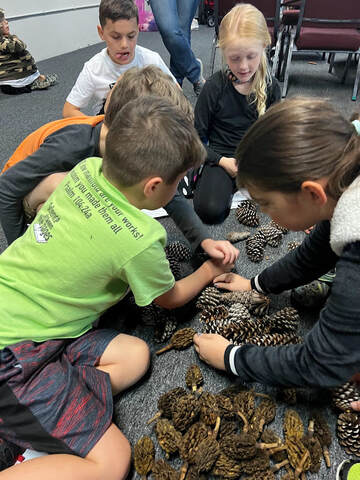
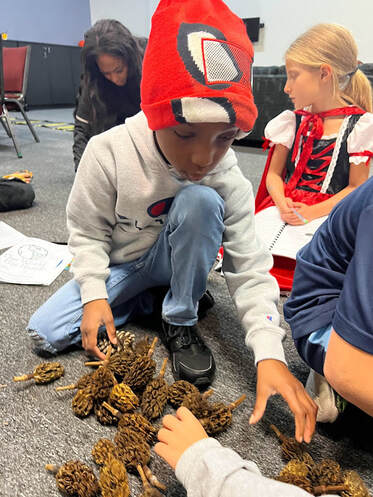
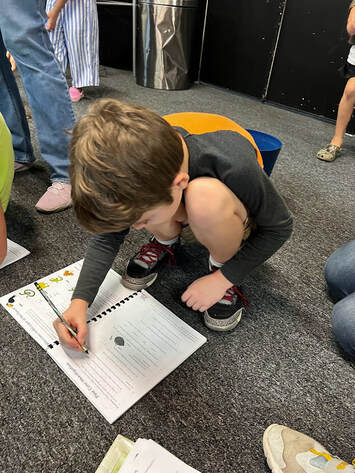
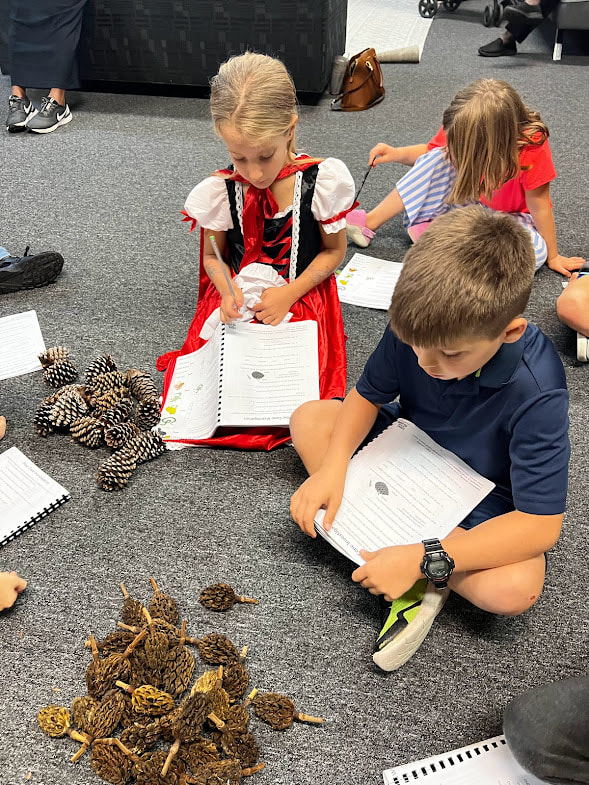
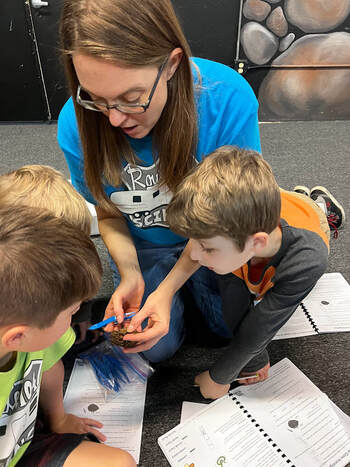
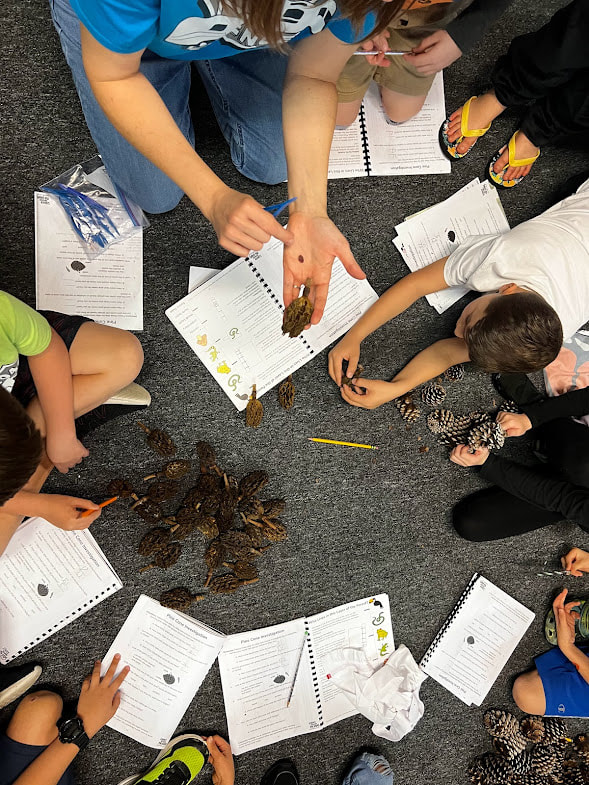
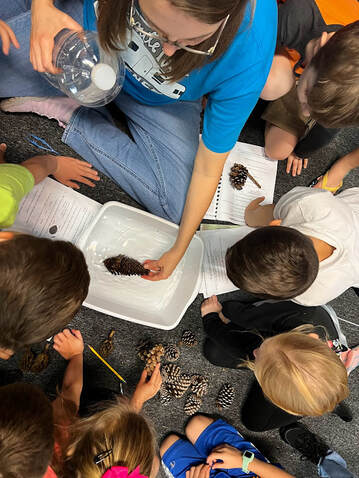
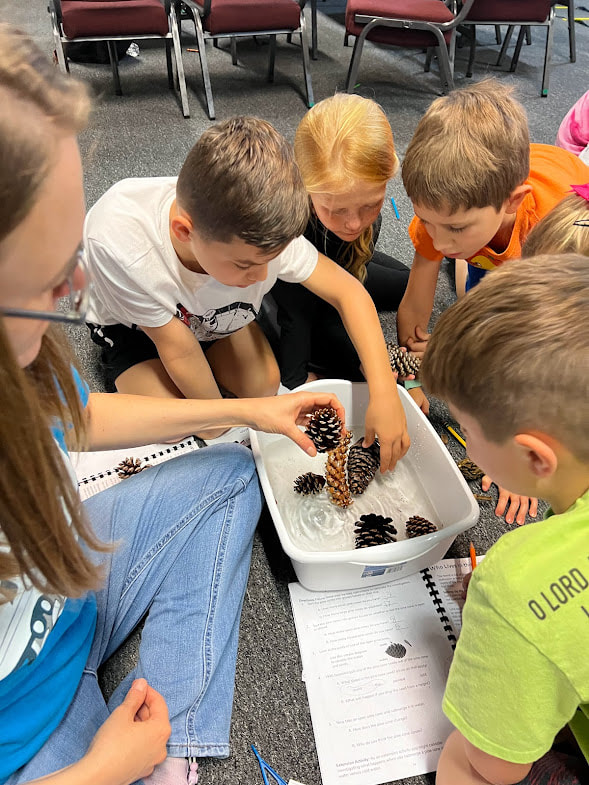
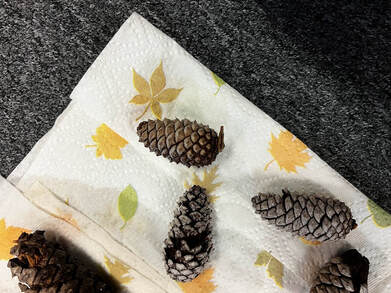
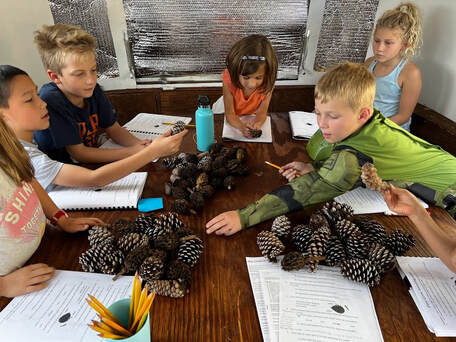
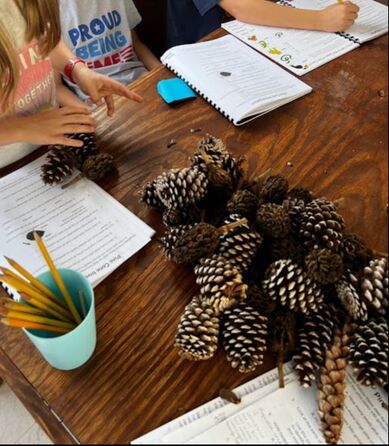
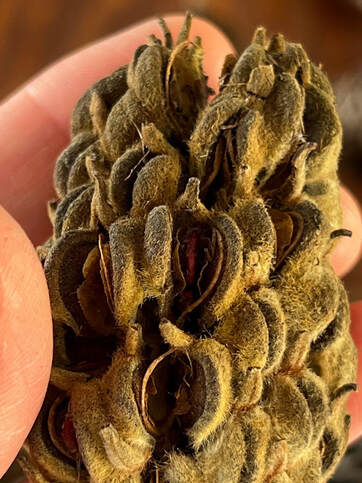
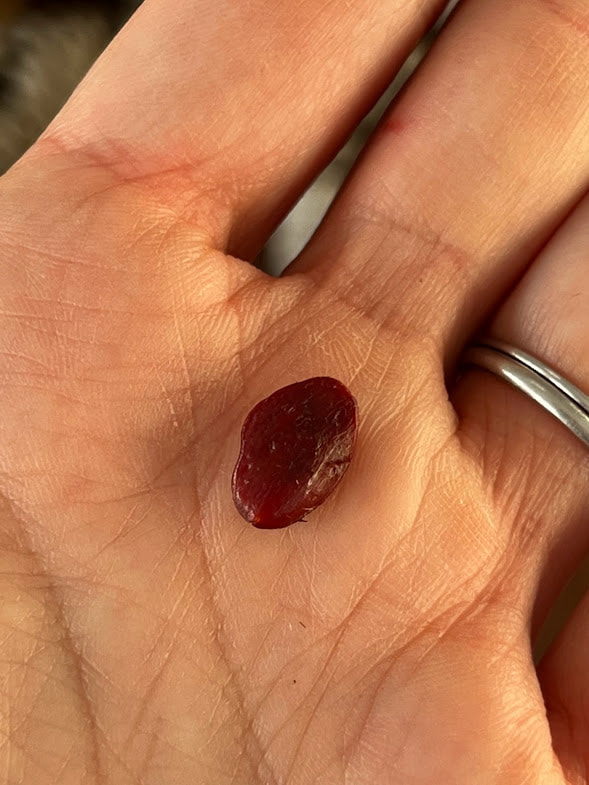
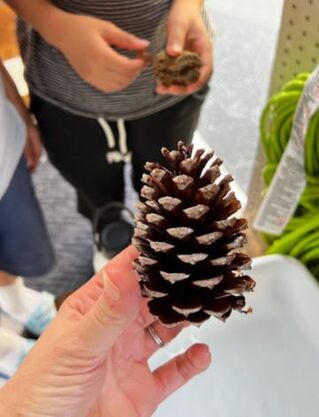
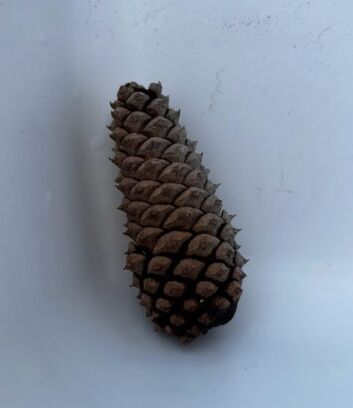
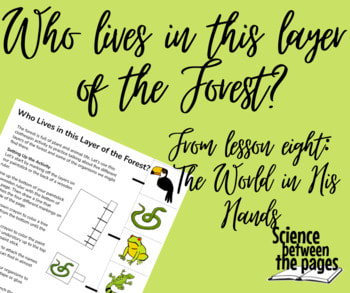
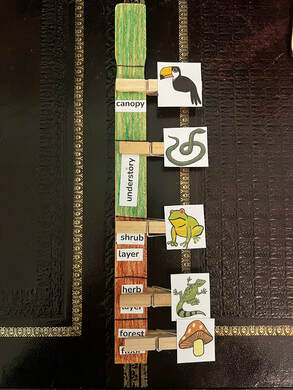
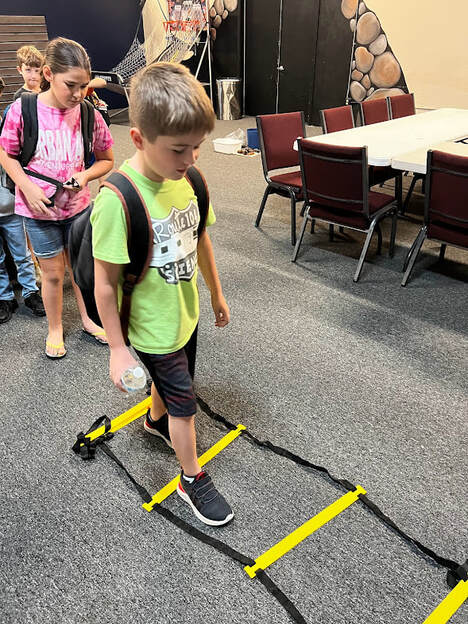
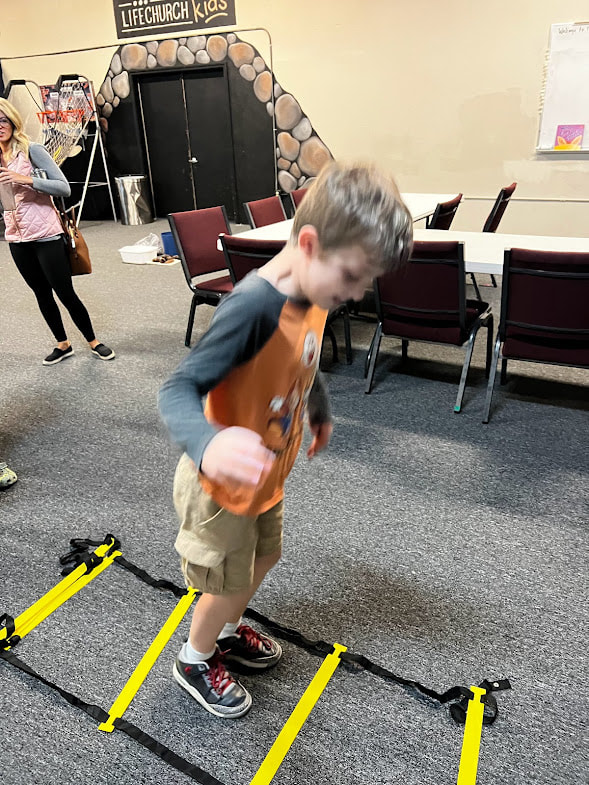
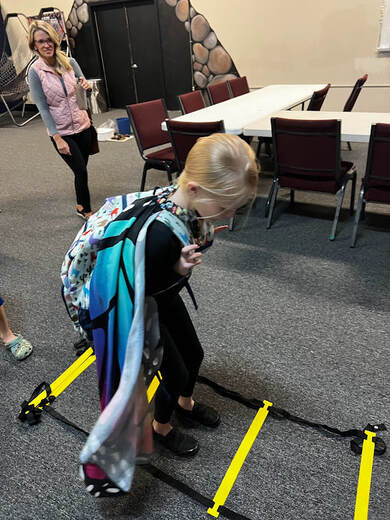
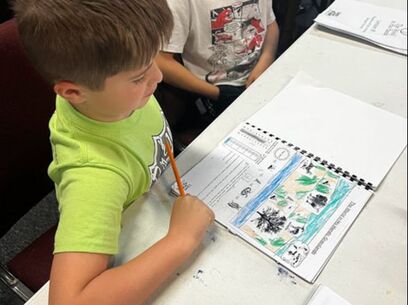
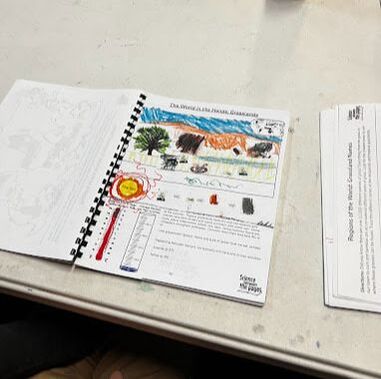
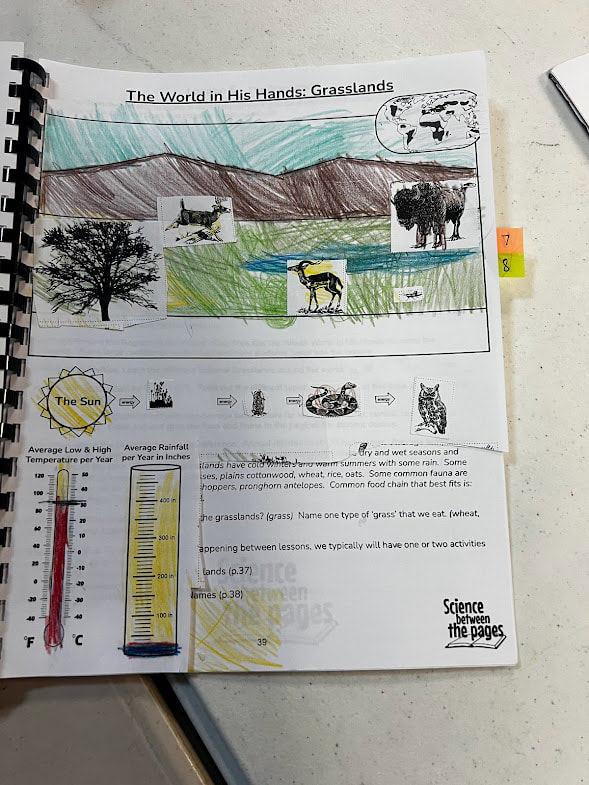
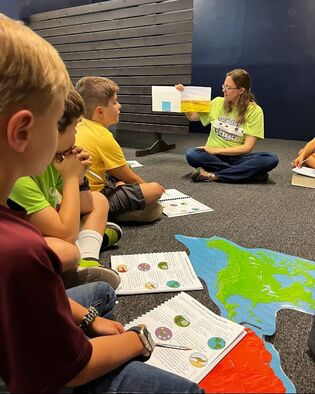
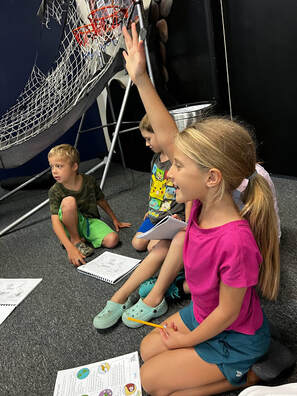
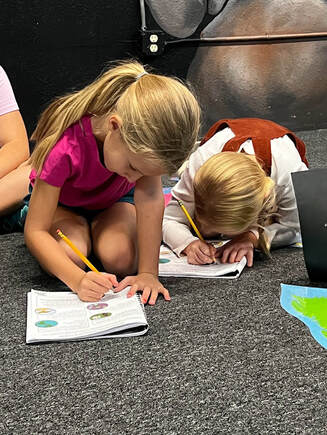
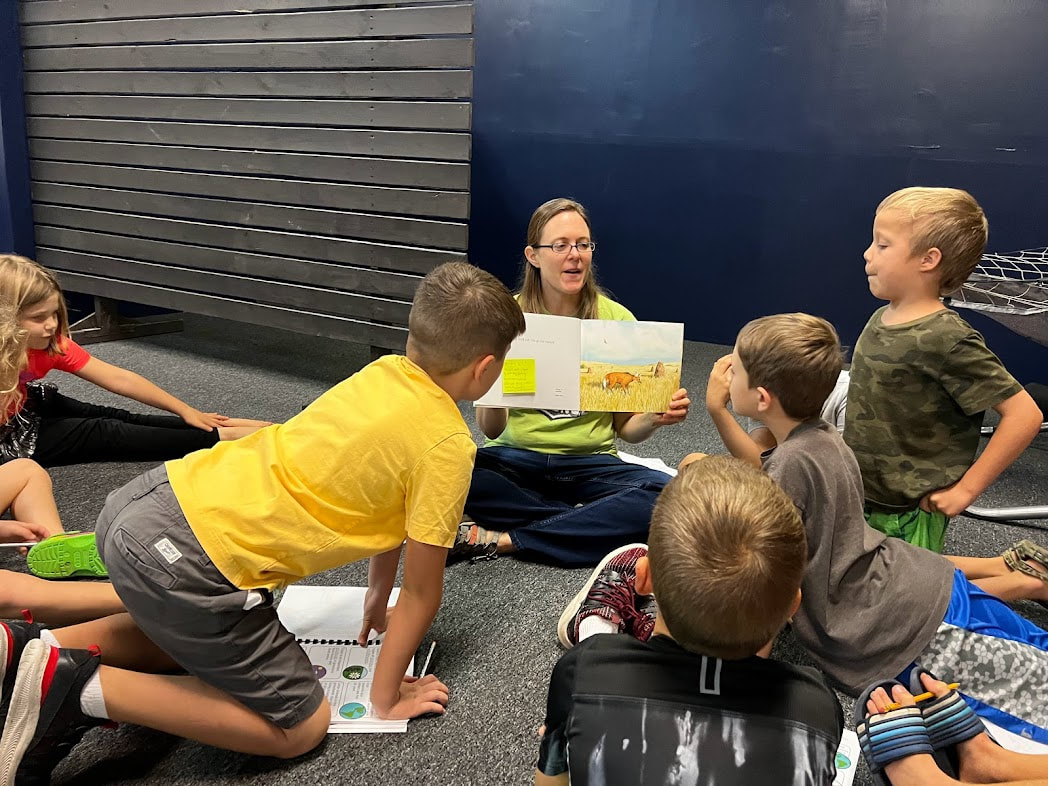
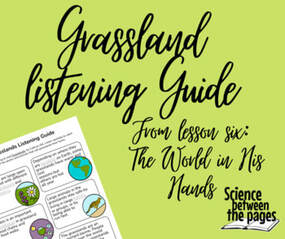
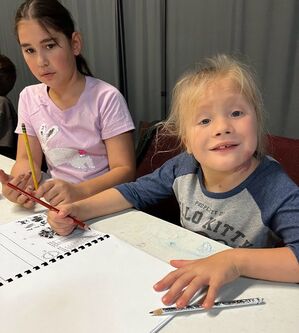
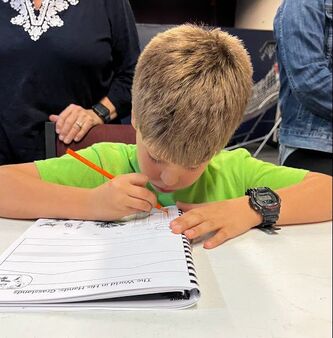
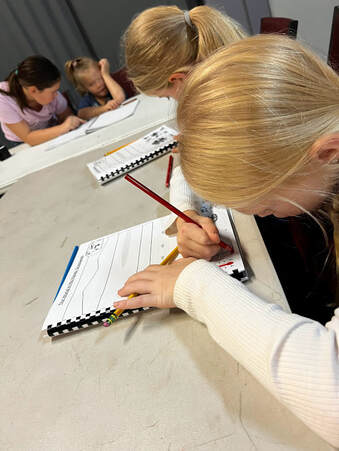
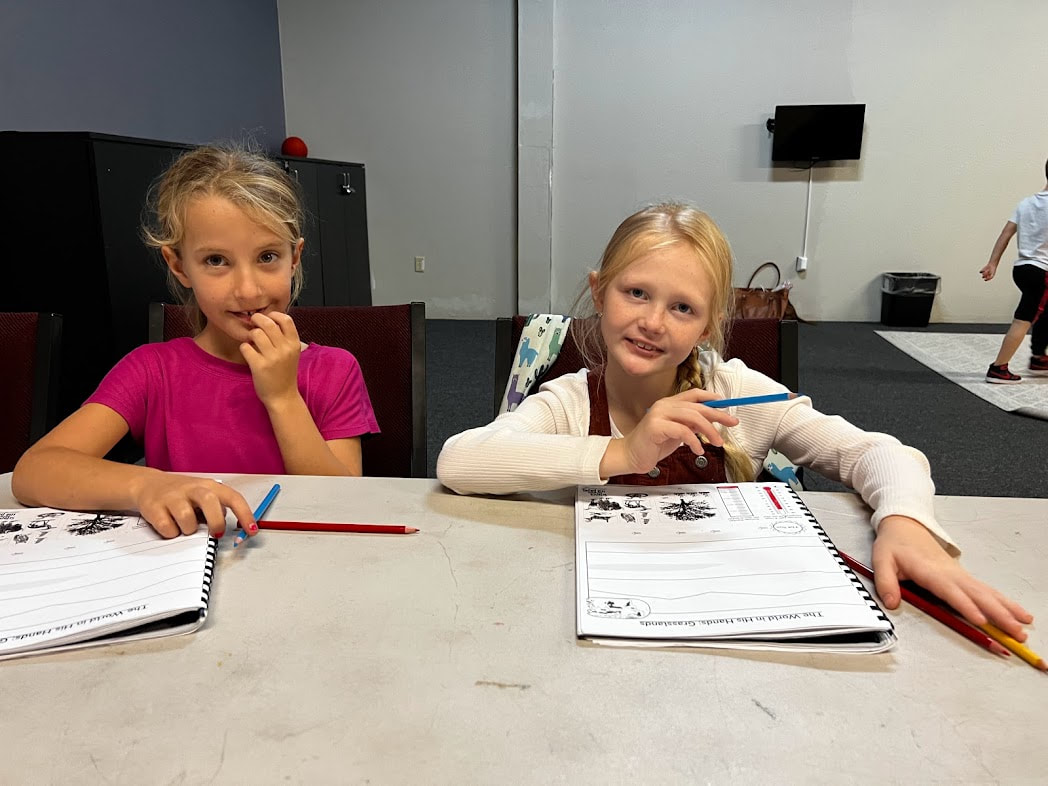
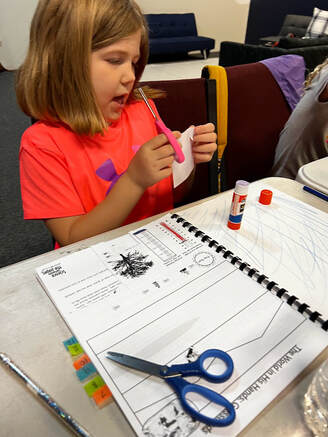
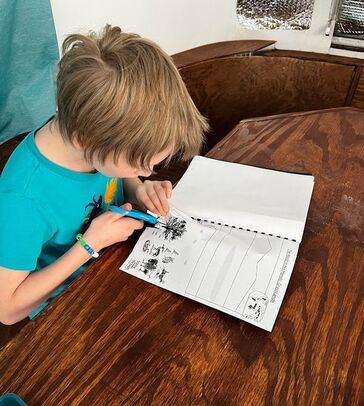
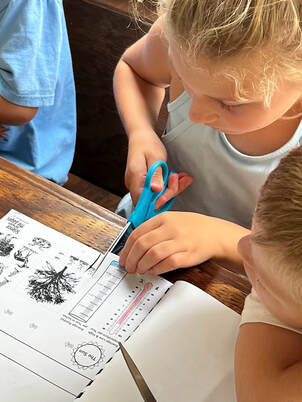
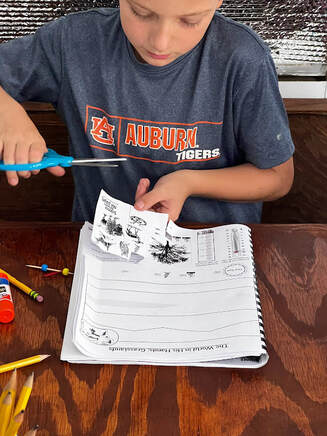
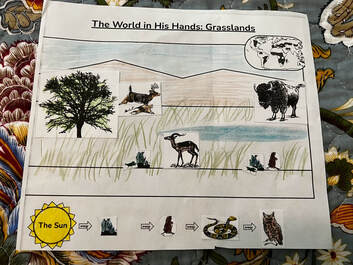
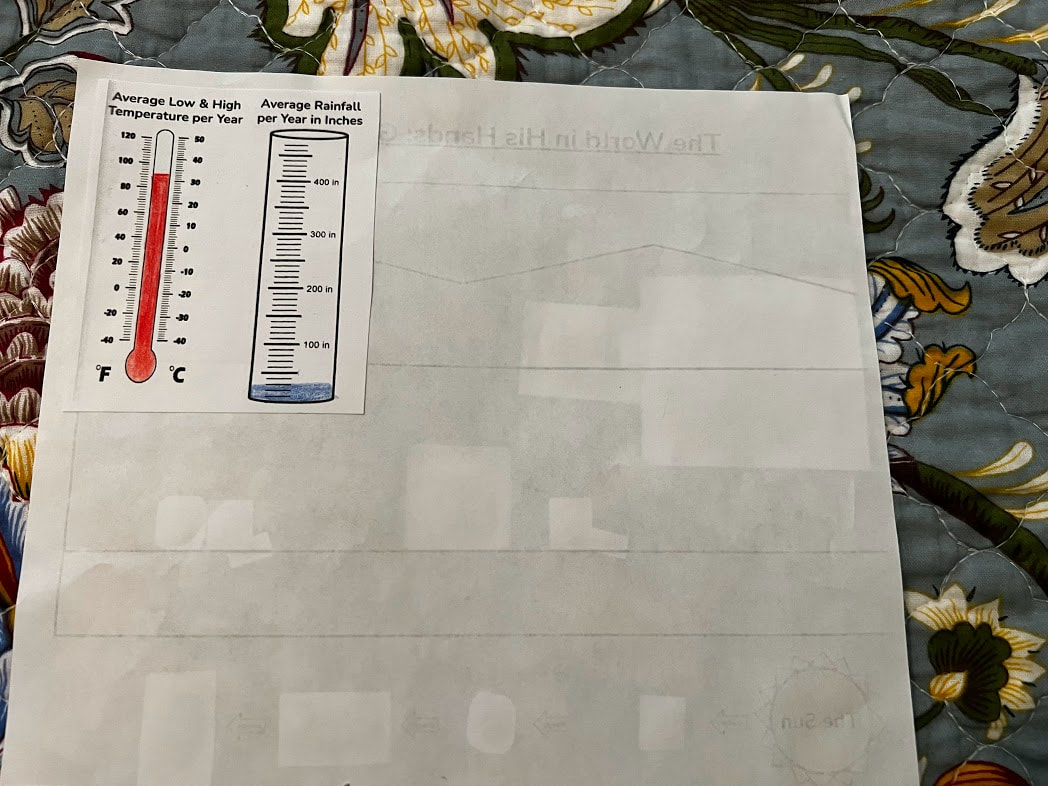
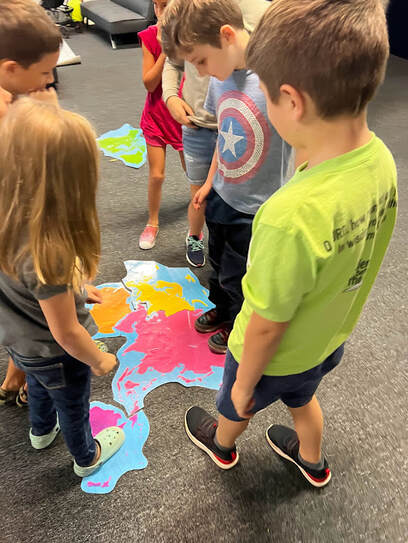
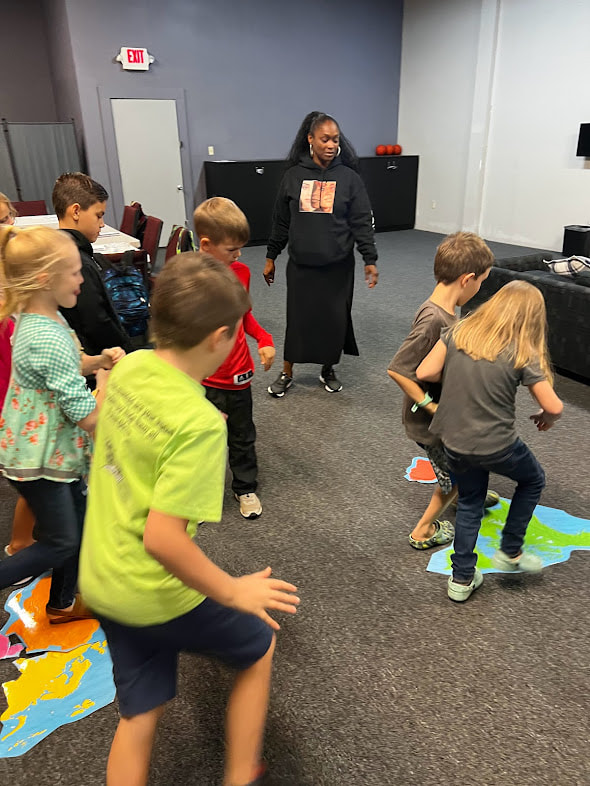
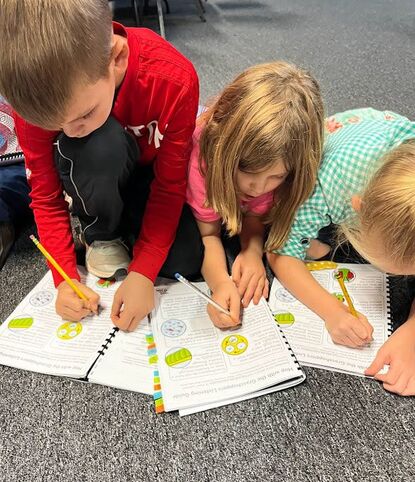
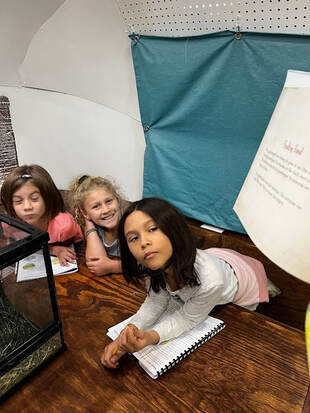
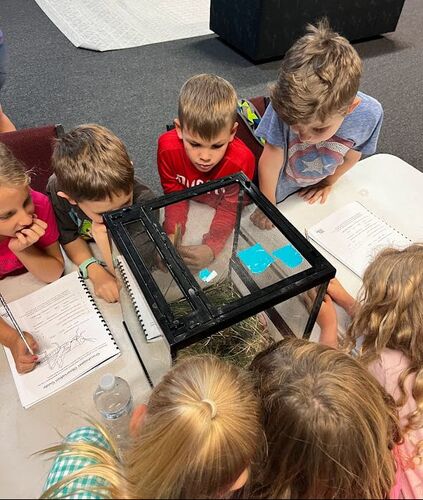
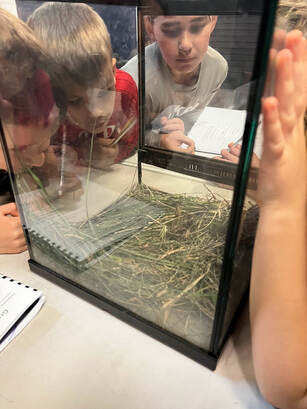
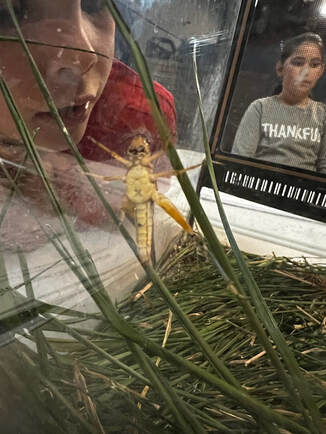
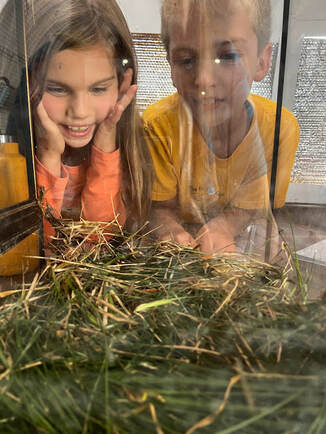
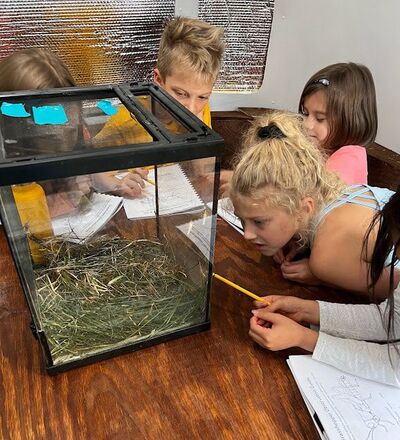
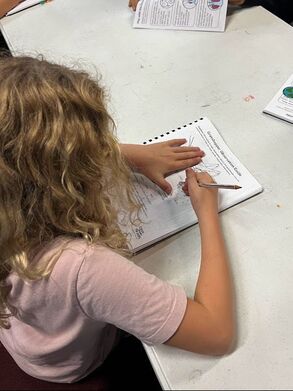
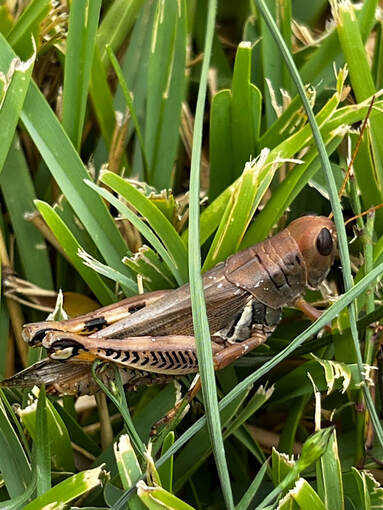
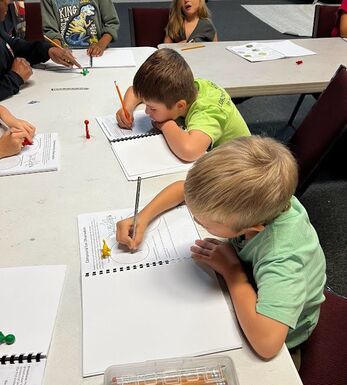
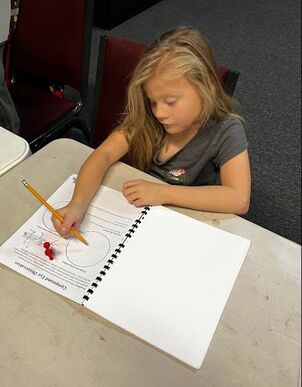
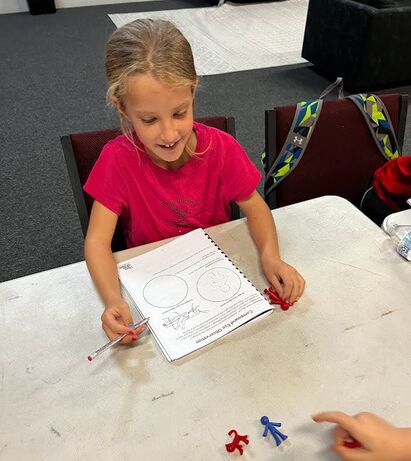
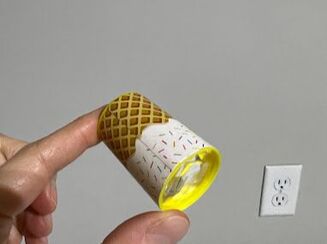
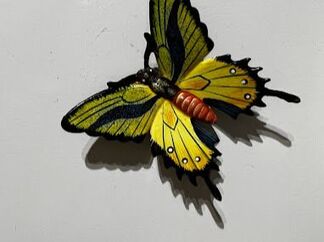
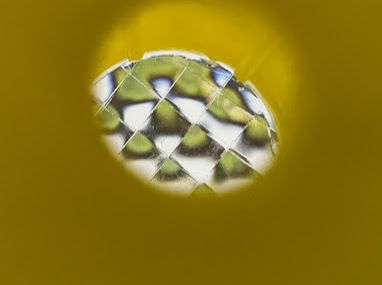
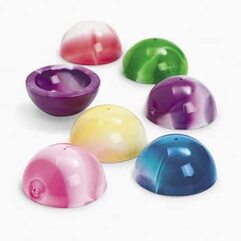
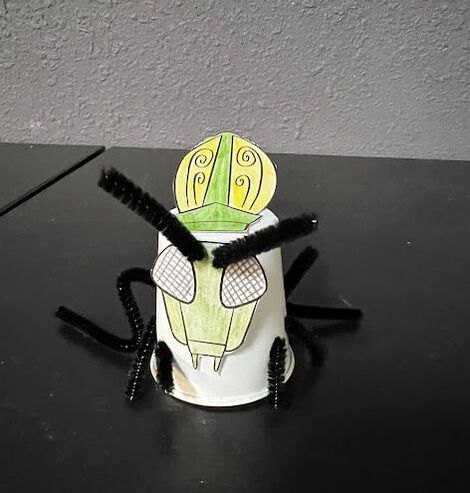
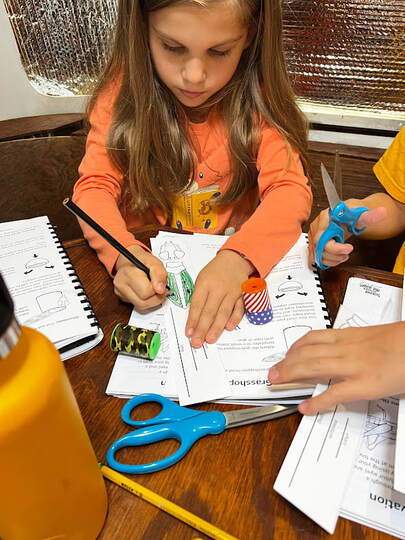
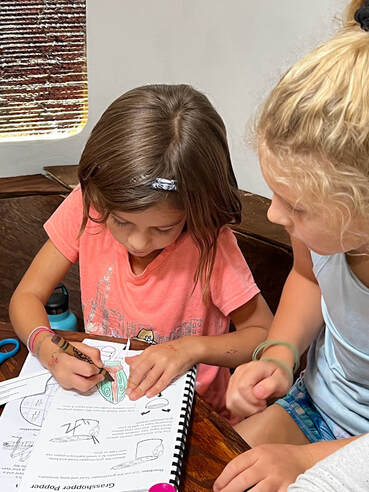
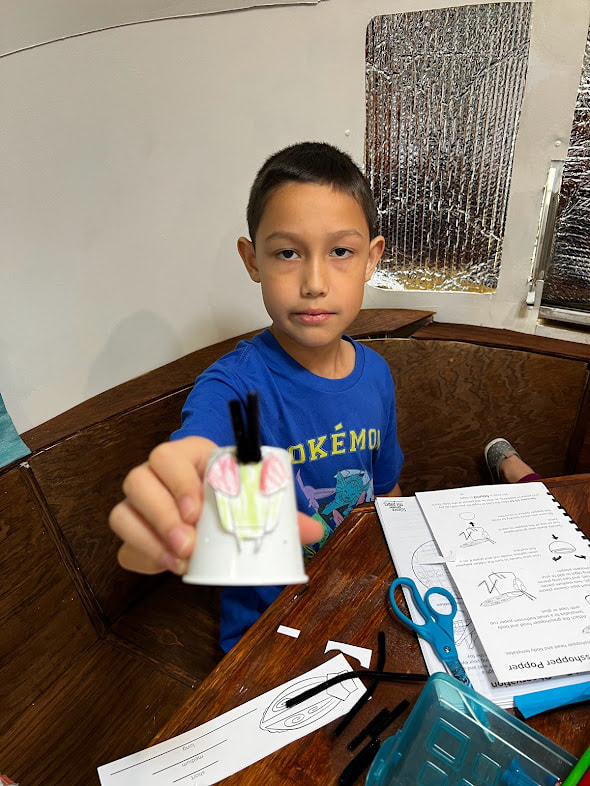
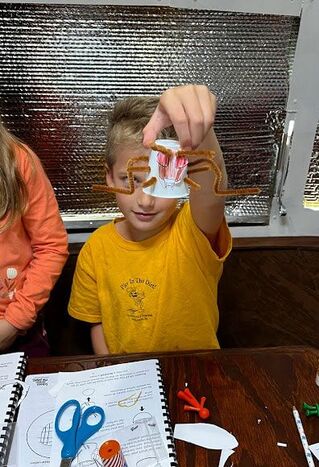
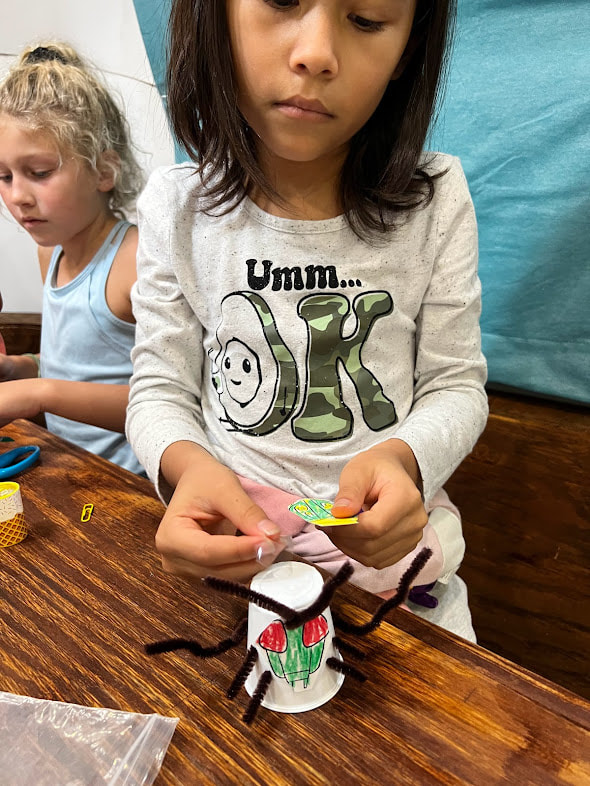
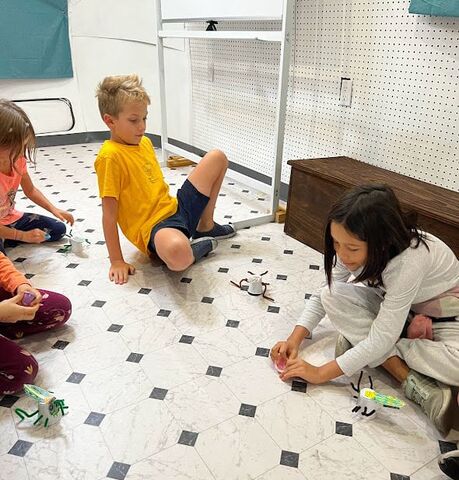
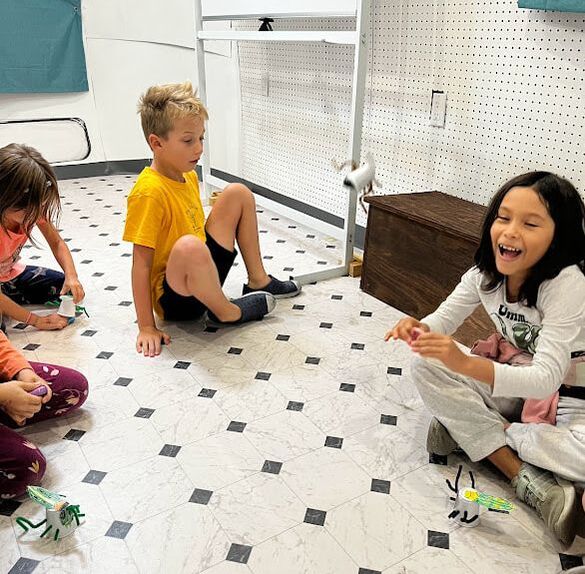
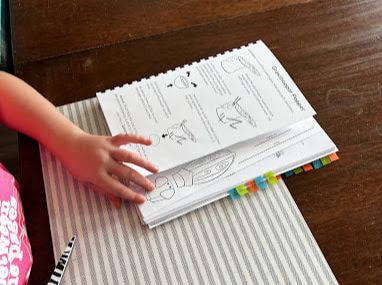
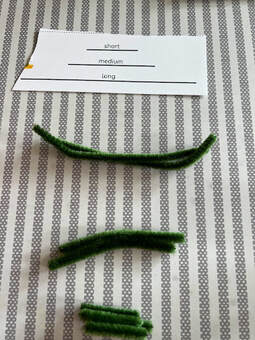
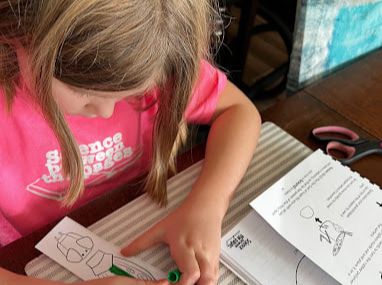
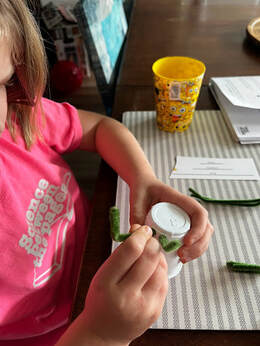
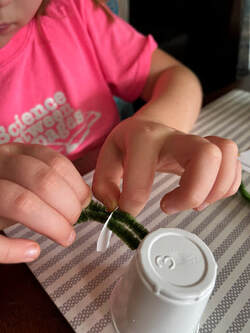
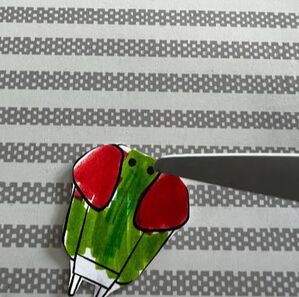
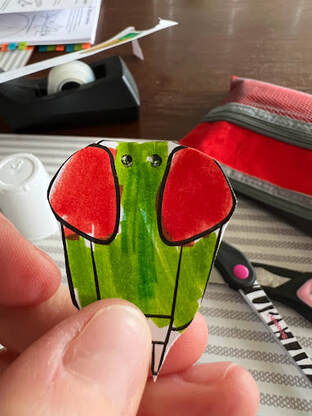
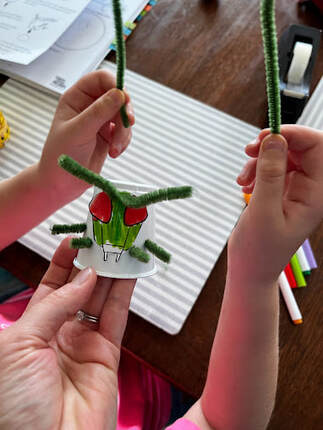
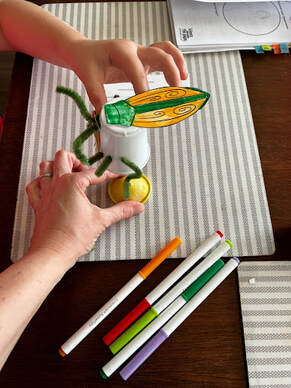
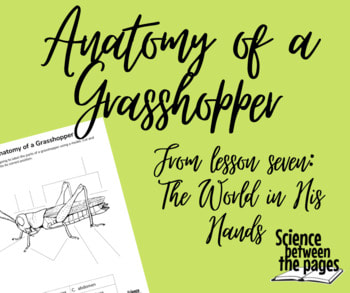
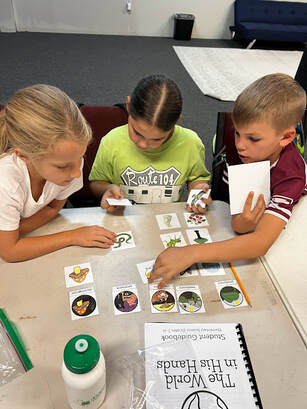
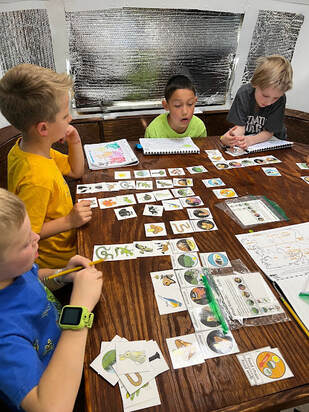
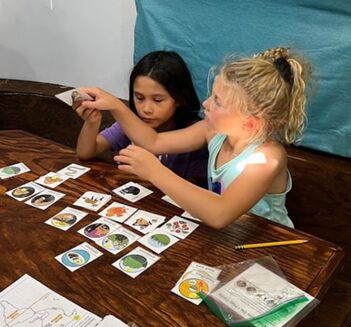
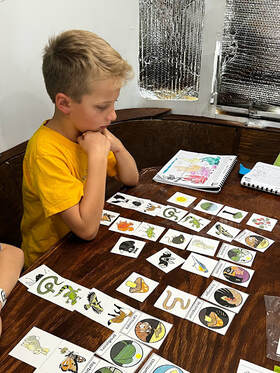
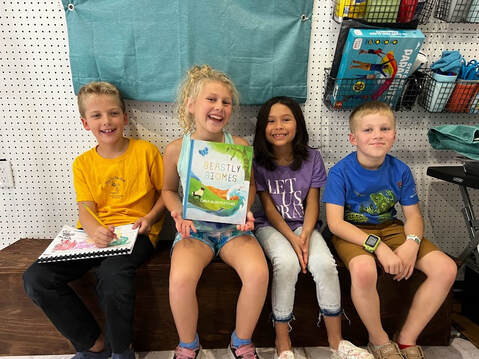
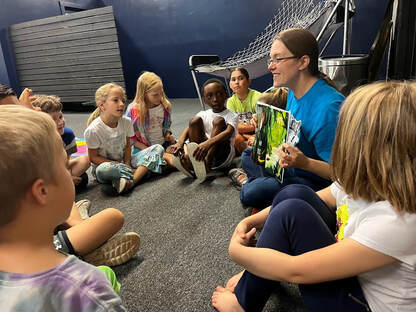
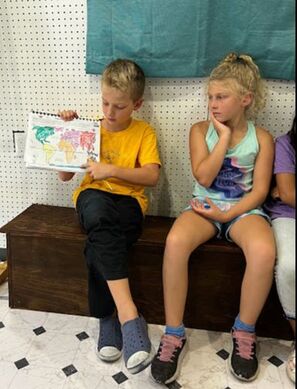
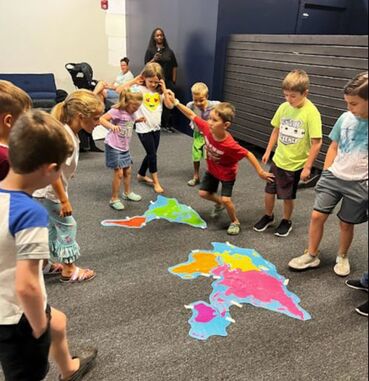
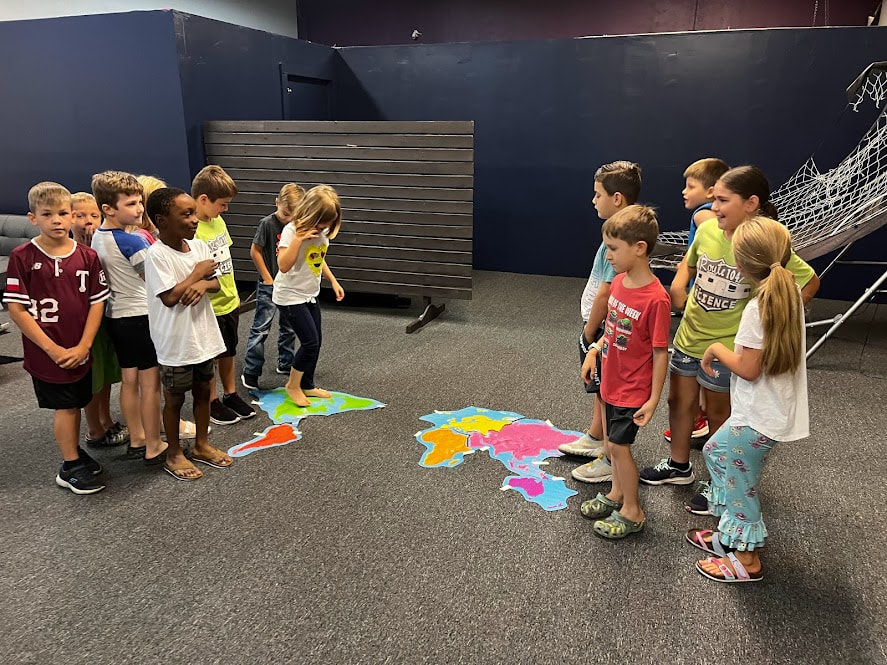
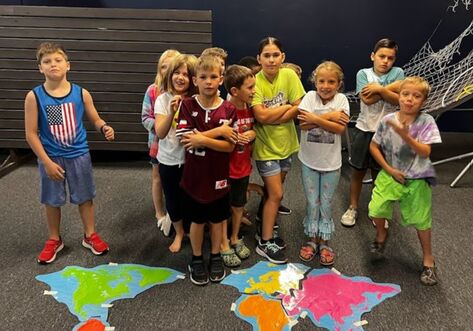
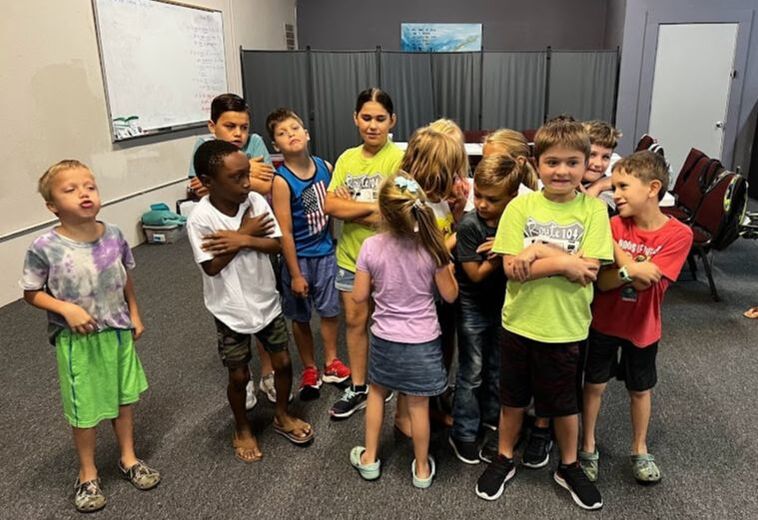
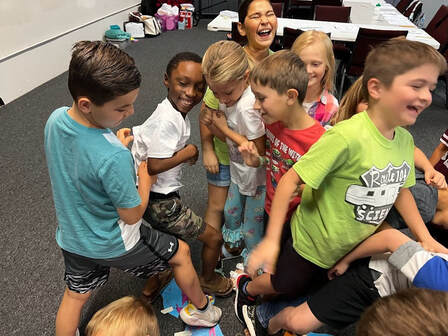
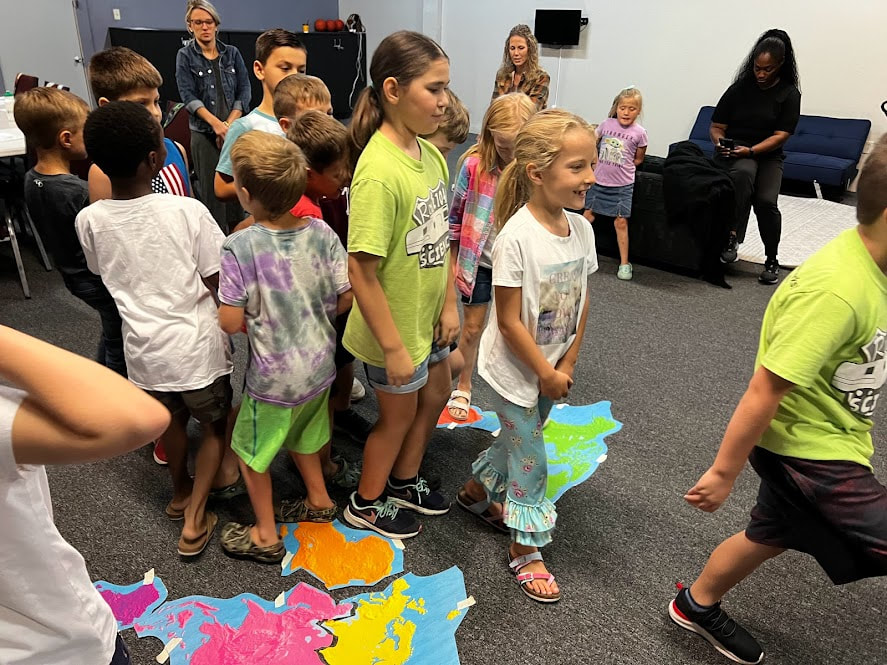
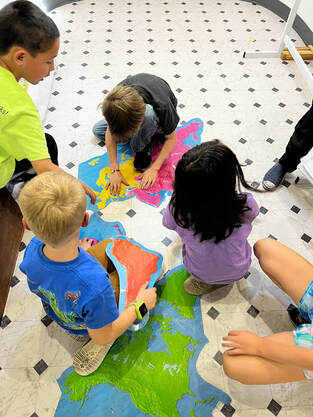
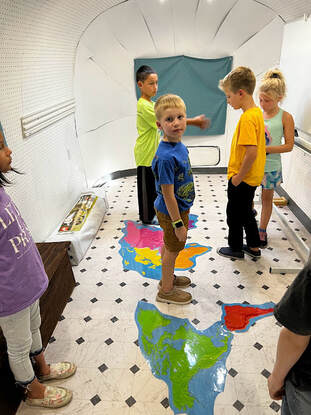
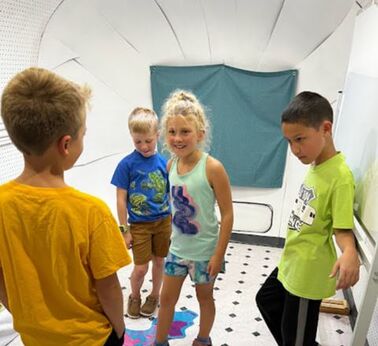
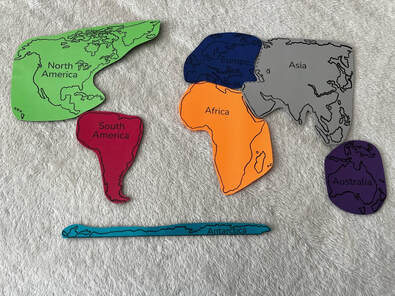
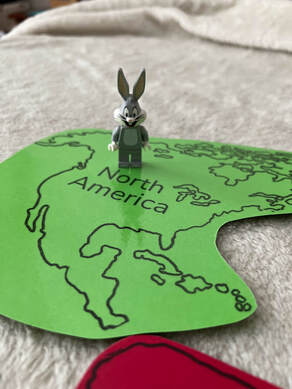
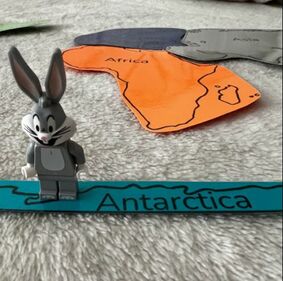
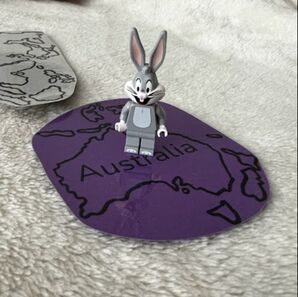
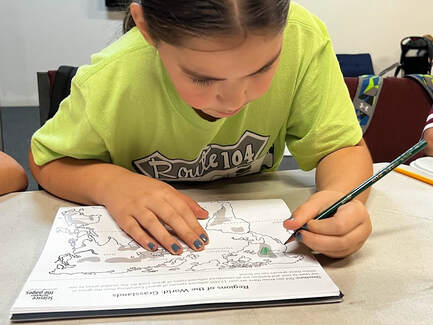
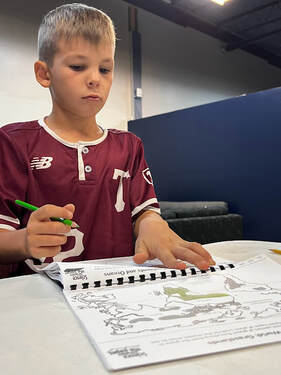
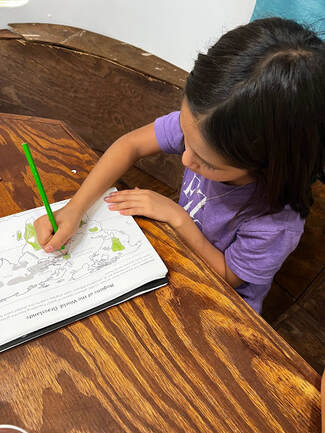
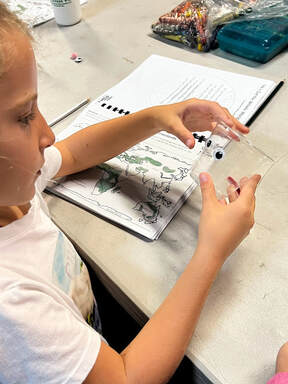
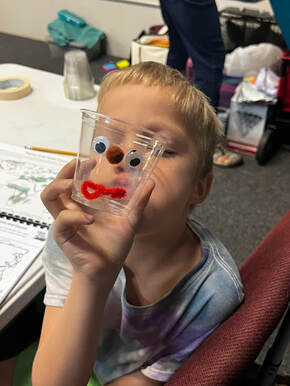
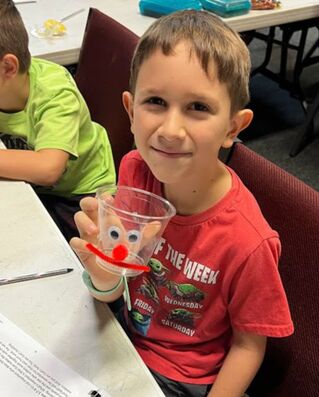
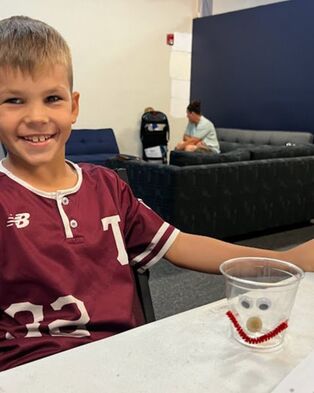
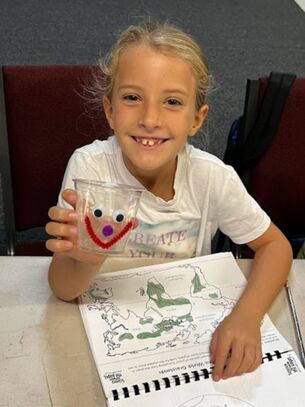
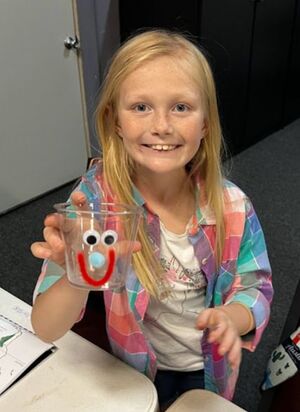
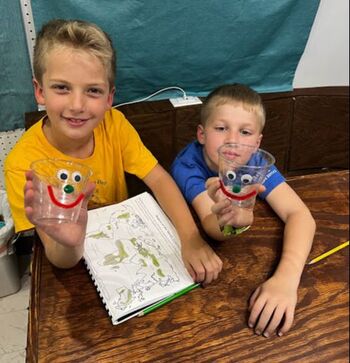
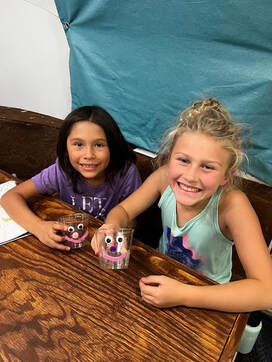
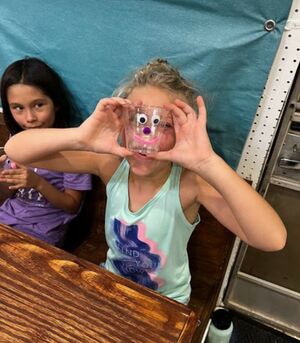
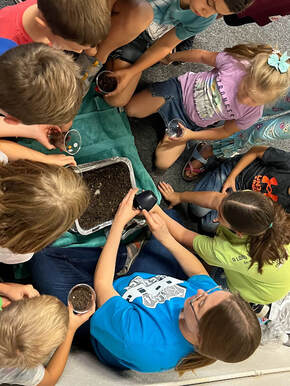
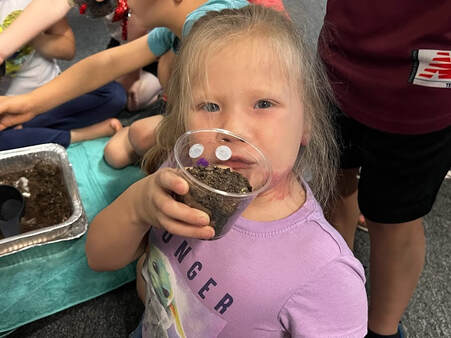
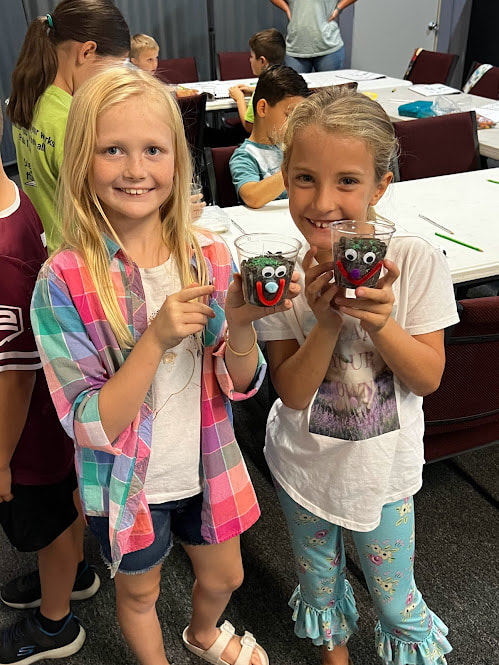
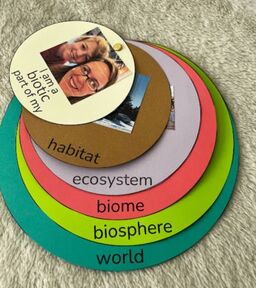
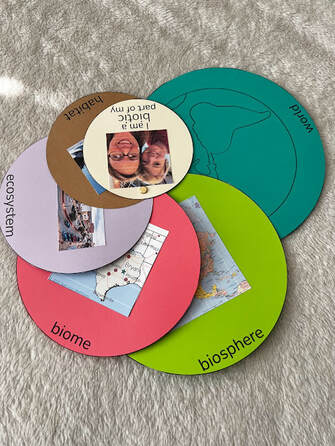
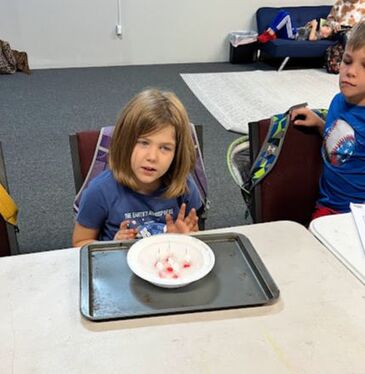
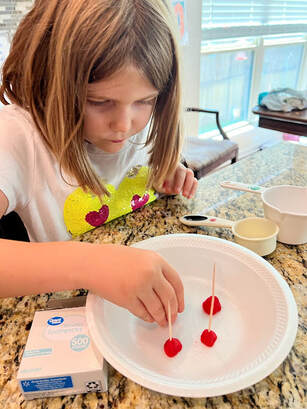
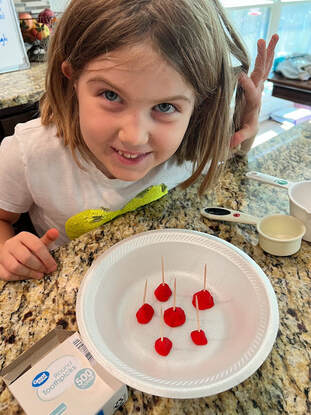
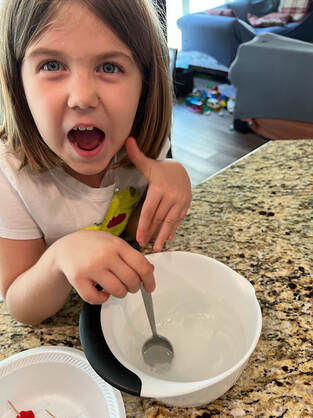
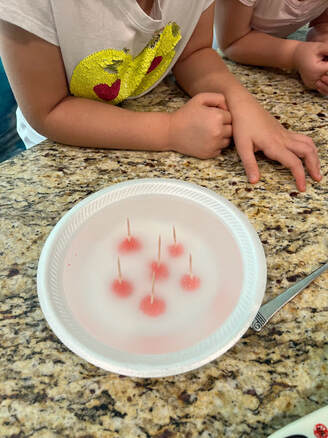
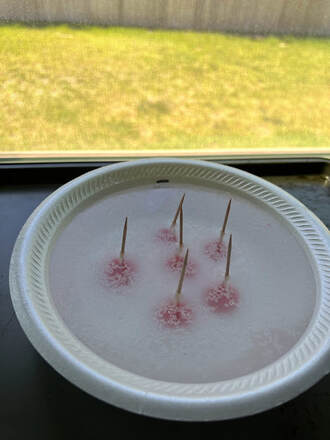
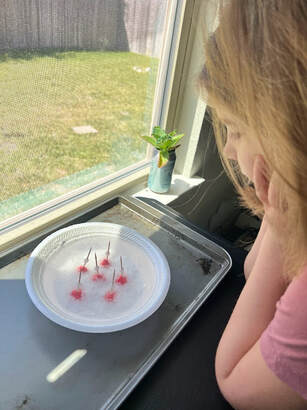
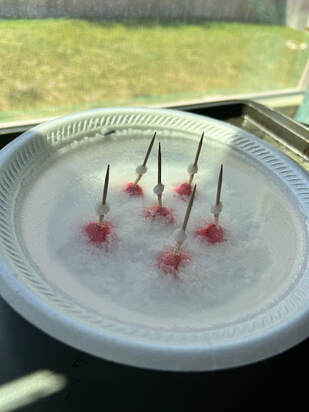
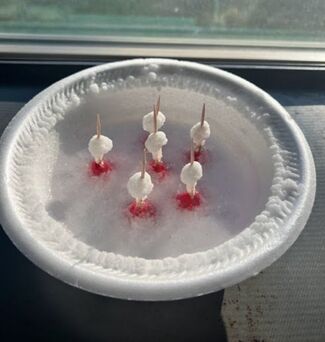
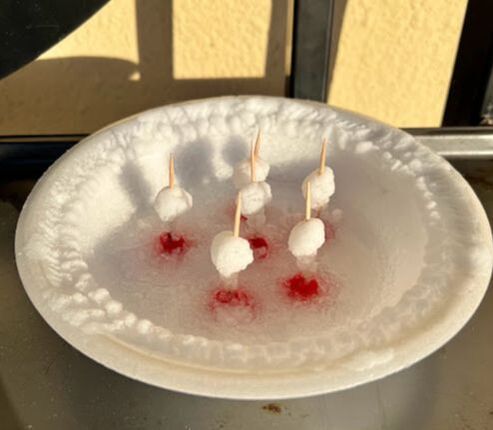
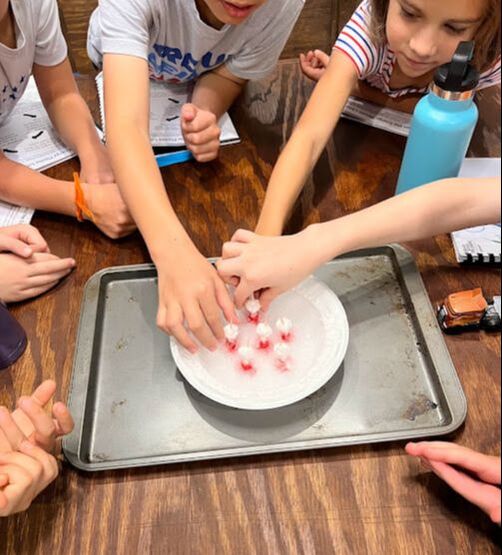
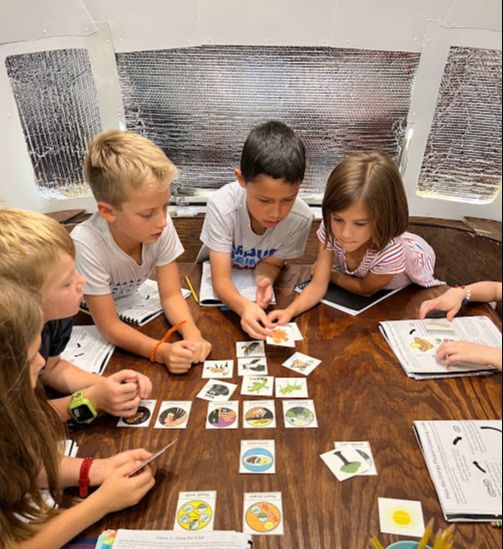
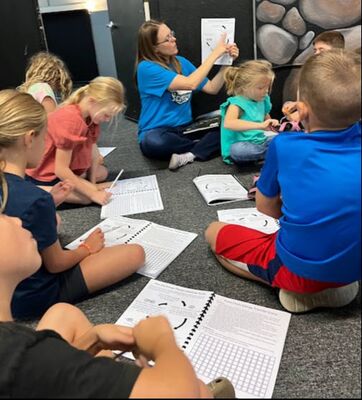
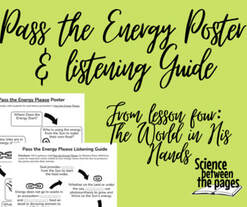
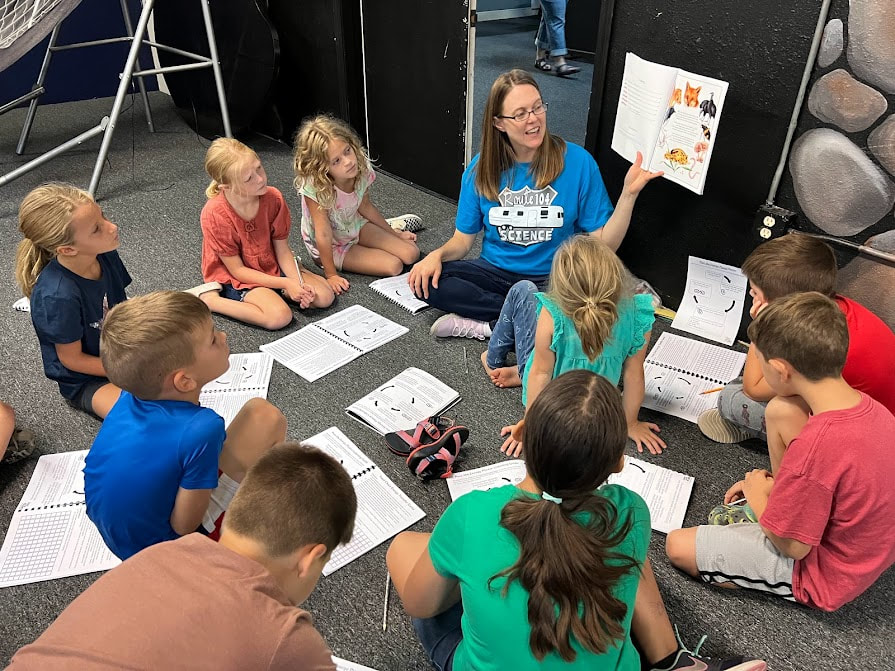
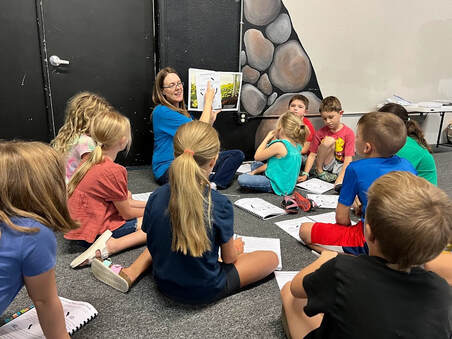
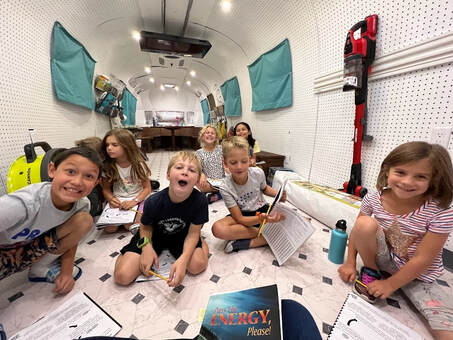
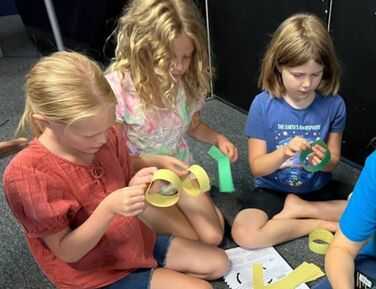
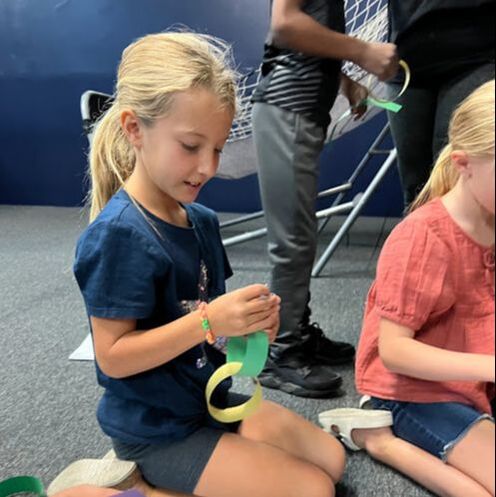
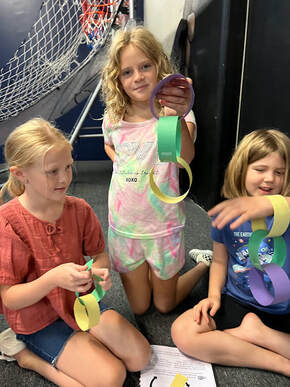
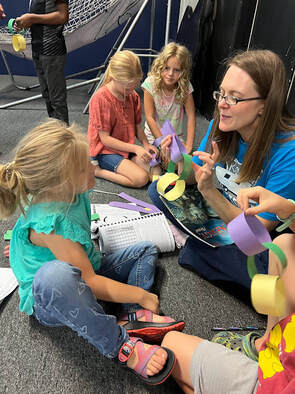
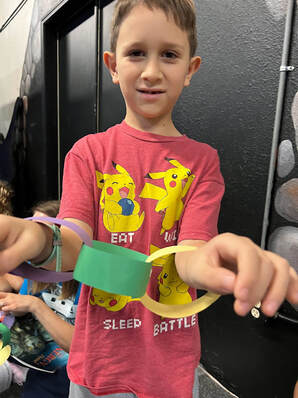
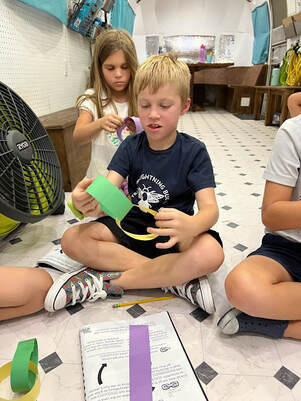
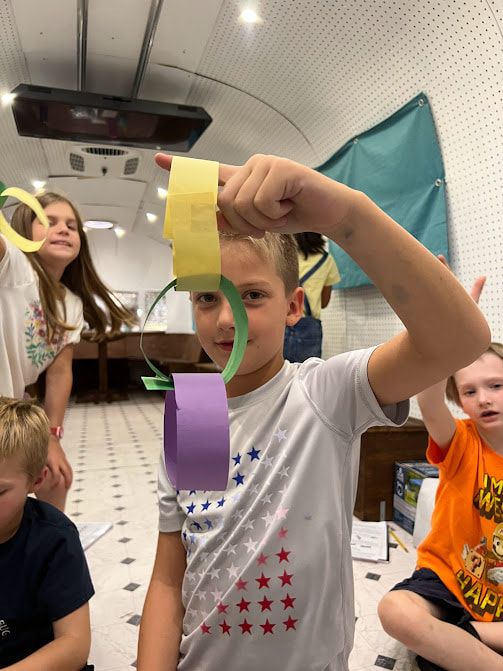
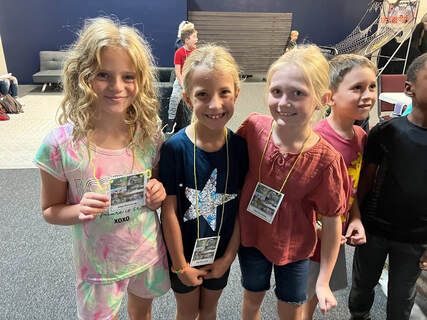
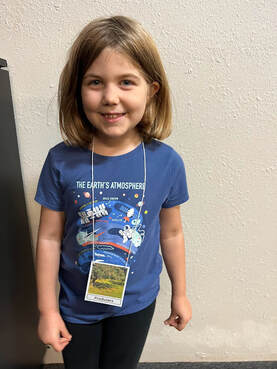
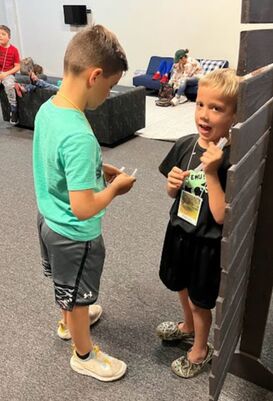
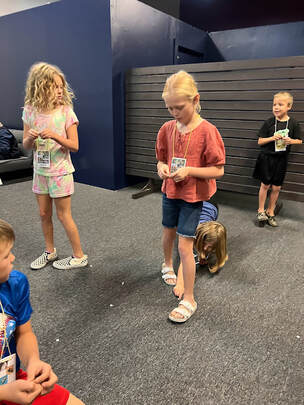
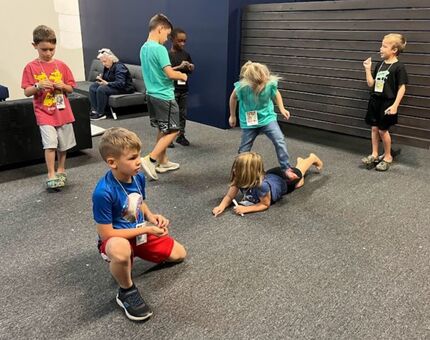
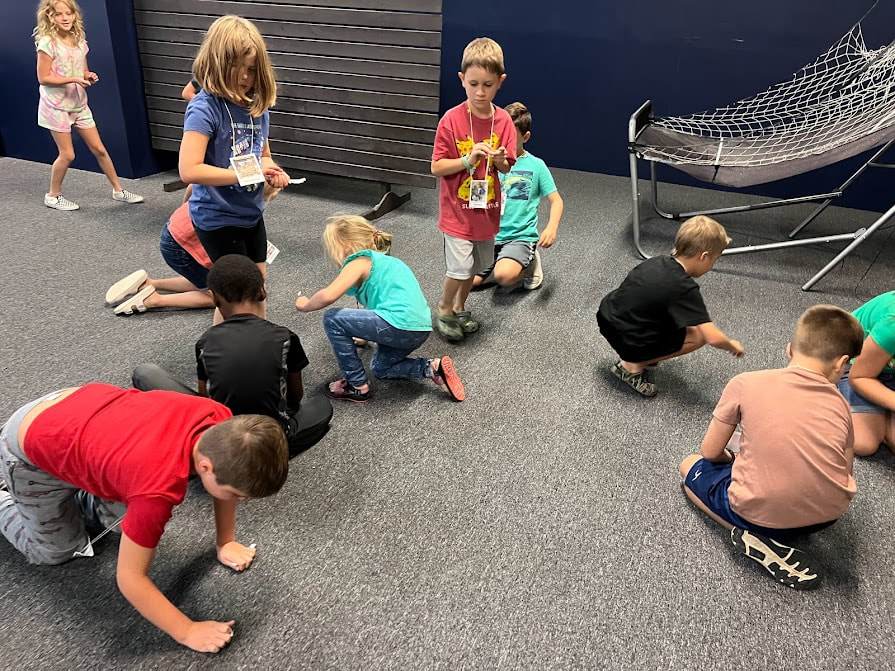
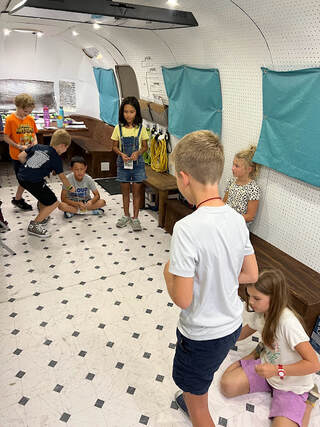
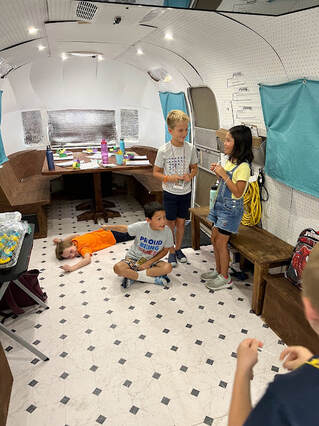
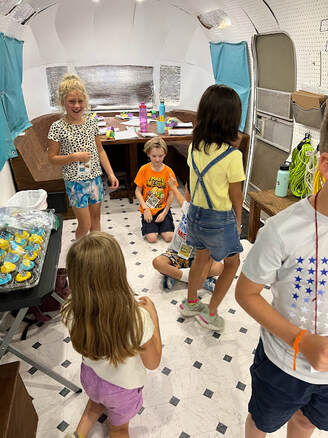
 RSS Feed
RSS Feed